How to Compile an Interior Manual for Steward/esses
An integral part of managing a successful steward/ess team on board, whatever the size of the yacht, is having a comprehensive steward/ess training manual. I have always found it extremely challenging and unprofessional when, upon joining a new yacht, I was unable to find a single note anywhere on owner preferences, scheduling, inventories, SOPs, general interior rules and regulations etc.
This happened to me with almost every new chief stew and purser position I accepted, which meant that I had to spend immense time and effort compiling a training manual myself - time that you don’t always have just before a busy season or at the end of a period in the yard.
In my view you can’t achieve the standards of service a guest or yacht owner deserves without giving proper training and information to your team, and it's unfair to expect them to ‘guess’ what you need and expect from them.
In this column we'll take a look at some suggested content for a training manual for an efficient, organized and well-run interior team. Obviously each manual must be adapted for the individual yacht.
Introduction
A brief ‘welcome aboard’ with some positive input is a good starting point. It is important to make the new steward/ess feel like they are not just receiving a book full of lists, rules and regulations, but that it also leaves the door open for them to approach you – and to feel safe and welcome to do so.
It's very important to add a complete and thorough description of all the on board operational documents – I always discussed this with the captain, chief officer and other senior officers to ensure I communicated the correct and most up to date versions.

Onboard Operational Procedures and Documents
Master list and emergency safety plans and all emergency procedures, as well as emergency exits – I always find it works well to add photos of donning a life jacket, where emergency exits are located, etc.
MSDS (material safety data sheets) for all cleaning and housekeeping products.
All applicable and updated SOPs (standard operating procedures).
NDA and applicable confidentiality forms/contracts.
General Operational Information
Crew information – phone numbers, laundry days, cabin, etc.
Crew preference sheets.
Crew medical information and allergies.
A list of all interior inventories.
Inventories
Location of all interior items – bilges, under stairs, under beds, etc.
Galley and service items.
Salon/dining room/stew pantry storage.
Decor/theme storage and location.
Table setting items, napkins and napkin rings.
Cabin inventories.
Crew bilge and other bilge inventories.
Crew mess inventory.
Master cabin and all guest cabin storage inventories.
Linen closet inventory.
Medical inventories - guests OTC (over the counter medicine), crew OTC, MCA.
Audio-visual and Equipment Instructions
Full instructions on how to operate all AV and other equipment in the interior.
Audio visual systems.
Internet and satellite systems.
All applicable equipment on board – instructions with photos.

Steward/ess Duties and Scheduling
Our next section would cover steward/ess duties, regulations and scheduling – let’s look at some suggested documents for this very important section.
A description of the steward/ess responsibilities on board.
Detailed job description for each steward/ess position, including the chief stew and purser - it is only fair to be clear and open about each team member’s responsibilities, including team leaders.
Crew assessment/performance/evaluation forms – include examples of these to provide open and honest information regarding what individuals will be evaluated/assessed on, and how often.
Future performance planning for each steward/ess – this should be fluid and adjusted as each stew's performance is measured, assessed and discussed with the individual.
Daily, weekly, monthly maintenance scheduling.
Daily worklists and responsibilities (including the laundry room and crew mess).
Crew head and cabin cleaning checklists.
General interior worklists and checklists.
Detailed cleaning checklist for each area on board.
Interior cabin cleaning procedures.
Sheet change days for which cabins.
A list and explanation of cleaning products and how to use them.
Dayworker worklists and checklists.
Air conditioner monthly cleaning and maintenance sheets.
On-charter dinner service guidelines.
On charter daily routine for steward/esses.
Pre-arrival checklists.
General tips for steward/esses with guests on board.
Guidelines for stowing for sea.
All owner and guest information.
Owner Preferences/Cheat Sheets
Each guest’s preferences and cheat sheet - thorough briefing/information on each guest (especially if it's a private yacht).
Clothing inventories of each guest.
Guest toiletry inventories and preferences.
Explanation of each guest, family tree, etiquette, titles, protocols, do’s and don’ts etc.
A list of service items and favourite glasses/dinnerware, etc. that the owners like, for instance: “Mr Smith only drinks out of the Christofle whiskey tumbler and never wants wine out of the Riedel glass set, always use the Robbe and Berking Red Wine glass for his wines.” – photos are crucial in this section.

Events/Parties On Board
Events/parties on board - preparation/mise en place checklists.
Contact information for chandlers, suppliers, and caterers.
Theme night ideas and set-ups.
Cabins where they go, how the arrangements should be made/look.
Flower order sheets.
Flower suppliers worldwide.
Alcohol and Beverages
Preference sheet for guests.
Alcohol and beverages inventory and order sheet.
Alcohol inventory – border control.
Wine training – containing notes on terroir, region, grape in wine, food and wine pairing, cheese and wine pairing.
General Laundry and Ironing Information
An explanation of your crew laundry labelling system.
An explanation of your guest laundry labelling system.
Include a complete list and explanation of all the onboard laundry products and how to use them.
A list of laundry care symbols and their meaning.
A list of common fabrics (upholstery and clothing) that the stew team will be working with on board and how to clean/handle each fabric (pay special attention to dry clean only fabrics, such as silk, etc.).
Sheet changing days and laundry schedule – all crew.
Crew uniform inventory.
Crew uniform description.
List of crew uniform suppliers, their contact details and each item they provide.
Crew uniform sign-out document.
Guest giveaway gifts – such as T-shirts, capes, etc. (included in uniform order).
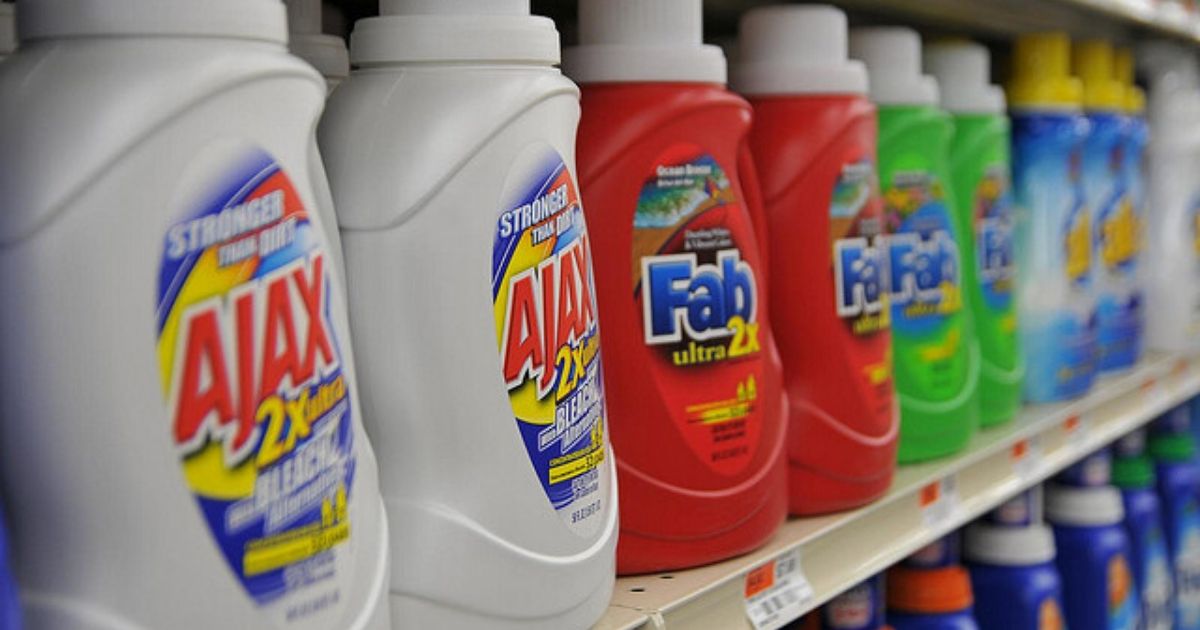
In the Laundry
Galley tea towels must always be washed separately from everything else. Cleaning cloths also need to be washed separately. Both should be washed at 95 degrees C but, for hygiene reasons, they must never be washed together.
Table linens – place mats and napkins also get washed separately. Delicate linens must be washed in a delicates bag and all napkins and place mats need to be hang-dried. They will shrink and become misshapen in the dryer. If in doubt, hand wash the napkins instead of running through the washer.
Galley rags, napkins and tea towels must be collected every night at the end of shift and washed or soaked.
Guest clothing and linens should be ironed and put away as soon as possible. Do not leave guest linens to build up, the longer they sit and pile up, the more potential for them to get marked and stained, and the harder it is to tackle the pile.
Crew clothing should be returned to the respective cabins at the end of each day. Don't forget what is hanging up. On charter, crew sheets are only washed on the allocated day.
White in-service uniforms must be treated before they go through the wash (chef jackets, polo shirts, epaulet shirts, etc). Check for stains and check the collars. If the stain has not come out in the wash, treat again. Do not put it through the dryer as it will make the stain set.
Always make sure that the laundry room is left clean and organized after your laundry shift. Clean the floor, wipe down all the machines, regularly clean out the filters of the dryers, drain the washing machines, keep the liquid dispenser of the washing machines clean.
All table linens, guest bed linens and epaulet shirts must be starched with spray starch and water.
General Laundry Tips and Rules
Only use laundry detergent in the machine, never powder.
Laundry must be sorted: check pockets, check for stains and check the labels, and separate colours and delicates from stronger fabrics.
Guest laundry always gets priority – always check the labels before washing!
Guest clothing: If in doubt whether to put in the washing machine, send to the dry cleaner instead. If ever in doubt about how to clean guest clothing, ask the chief stew first!!!! Remember to label all guest laundry in the CABINS before taking to the laundry room.
If guest clothes are sent out to dry cleaner, always keep bathrobe belts on board – they disappear otherwise!
Guest linen to be changed as per the sheet change rota.
Do not wash more than one large guest bath sheet in the washing machine at a time, it unbalances the washing machine and can cause it to stop or leak.
Make sure crew use their laundry bags.
Check and stain treat ALL whites before washing.
Treat all stains with the appropriate stain remover, if in doubt ask.
Do not tumble dry unless the stain has been removed otherwise it will set into the fabric.
If you washed boat fender covers or something really dirty, run the washing machine with bleach (empty machine) afterwards, before you wash crew clothes. Then make sure to wash a load of whites after the bleach cycle.
NEVER mix colours and whites.
NEVER mix crew and guest laundry.
NEVER mix galley rags with other laundry.
NEVER mix cleaning rags and tea towels.
NEVER mix engineers overalls with other laundry.
NEVER mix cleaning rags with other laundry.
Be careful when you iron clothes – if in doubt about what heat to use – ASK! Always use the iron cloth over delicates and black/dark items.
Roller iron sheets, napkins, place mats and tablecloths when SLIGHTLY damp and then hang dry.
Hang the ironed napkins and guest pillowcases on a ‘clip-hanger’ during guest trips – they will be ready for use anytime the service or cabin stews need to use them.
ALWAYS make sure that guest clothes are hanging on guest hangers when returned to guest cabins.
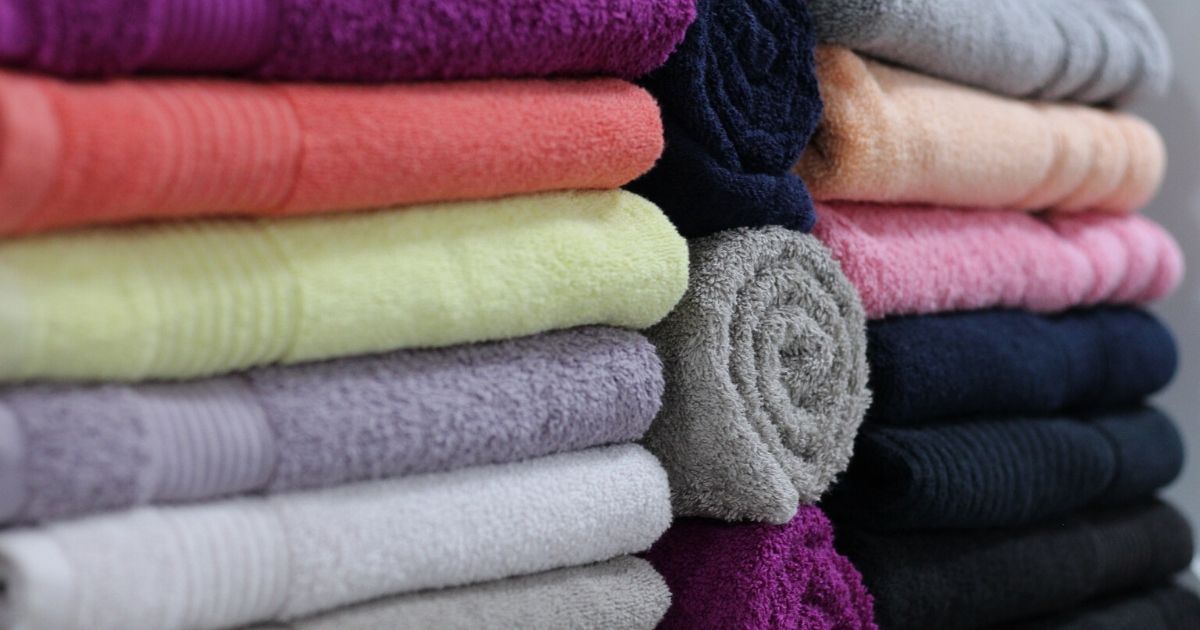
General Ironing Tips
- What to spray on sheets, pillowcases, tablecloths, duvet covers, napkins: 1/4 spray starch mixed with 3/4 water in a spray bottle. For an eco-friendly alternative, mix 2 – 3 teaspoons of corn starch with 500 ml of water in a spray bottle.
- Cleaning the vent holes: Often the vent holes in the bottom of the iron will become clogged. Take an ear bud and toothpick and clean out each hole individually. Always empty a steam iron after each use to prevent clogging.
- Cleaning the internal parts: Fill the steam iron with equal parts water and white vinegar. Let it steam for several minutes. Disconnect the iron and let it sit for one hour. Empty and rinse with clear water using the same process. Be sure to iron over old fabric prior to ironing clothes. If your iron cannot be cleaned with vinegar, clean it as per the manufacturer’s instructions.
- Energy efficient ironing: Put aluminium foil under the ironing board cover on the board. It will reflect heat onto the garments and cut ironing time.
Inservice – Guests On
Never leave any cleaning products lying around in guest areas, be sure to put things away in their appropriate place. As soon as a guest leaves any area, immediately enter and clean up/fix that area.
Keep daily tasks up to date, especially laundry. The boat will not run efficiently if tasks are left to build up.
Make sure you finish all of your jobs at the end of the evening before you sit down and stop work.
Do not go off to bed at the end of the evening and leave dishes on the sink, either clean or dirty. Wash them, dry them, and put them away. Leave the boat clean and tidy as the guests could get up in the night and may come into the pantries or bar to get a drink. CONSIDER THE PERSON WHO HAS TO GET UP IN THE MORNING AND CLEAN UP YOUR MESS.
If you are on late stew, then you need to be available to the guests until they go to bed, or until they dismiss you for the evening. That means checking on them regularly, offering drinks, etc.
When you return from a break, always check in with the stew on duty, find out what is happening with the guests' movements, and see if anyone needs help or has something specific that they need you to do. Please return after your shift in a timely manner.
REMEMBER – effective communication is the single most important part of making the boat, and the guests' vacation run smoothly.
Always wear your radio and turn it down low when you are around guests. Ensure it is charged at the end of each shift.
Always be alert and attentive to the guests and what is happening around you. If you are speaking to a guest, or are visible to a guest, do not slouch or lean on furniture or on the boat itself. You must look and behave in a professional manner at all times.
Guests & Service
Guest information and documents.
Breakfast set-up – for owners.
Breakfast set-up – charters.
Checklist for day packs.
Charterer information/preferences (especially for return charter guests).
Detailed guest preferences – especially on a private yacht.
Set-up/mise en place lists for lunch and dinner.
Stewardess schedules on charter.
Guest dislikes, likes cheat sheets.

Guest Service and Table Service Training
Summary of various styles of service used on board.
Photos of different service items/cutlery, etc. and what they are used for.
Basic cocktail recipes and specific explanations of the owner’s/guests’ favourite cocktails and how to prepare it.
A good idea is to prepare a fancy picture book that can be laid out in the bar area with a variety of cocktails offered on board – this can be used for training and to encourage guests to order cocktails from the book.
Another idea is to use photos of how to make each cocktail rather than just give the recipe.
How to do turndowns, turnups and cabin checks while on charter.
Basic food health safety guidelines to be used on board.
General Service and Guest On Rules
American, French, English, synchronized service – make sure stews understand these different styles and are shown (and practice) these styles often.
If you are serving from the left, you will serve with the left hand, that way you are creating open body language towards the guests. Likewise, when serving drinks, you should serve with the right hand, especially wine, presenting the label to the person whom you are serving. Remember to put a wine napkin around the top of the bottle.
Discuss seating arrangements and menus with the host before every meal – normally the chief stew/head of service does this.
ORDER OF SERVING: How do you serve your guests and who is served first, second, third, etc.
Always know exactly what is being served and be able to explain this to your guests (such as ingredients, terminology, origin of food, pronunciation, cooking method, etc.) REMEMBER ALWAYS to have a smile while serving!!!
EYE CONTACT is also very important - if you never gain eye contact with guests they will feel as though you are trying to avoid them. They are there to have a great time, enjoy their meal, and you can create the atmosphere for this!! Even if you do not say anything to them, a smile and eye contact will enhance this atmosphere of relaxation and fun.
When serving pie or cake slices in a triangle, make sure the cake/pie point shows towards the guest when putting it down in front of them.
Always discuss with the chef/chief stew/head of service how plates will be presented to guests – meat to the bottom, vegetables at the top, potatoes on the left, whichever way the chef wants to present his/her food. This ensures that dishes are put down the same way in front of all guests.
Make sure that everything on the table is neat and orderly before a meal, knives all lined up, place mats one inch from the border of the table, spoons facing the same direction. Check the table a few times before a meal, you might find something that you have missed. Specifically check that glasses and silverware have no fingerprints on them.
Salt and pepper shakers are always put down next to each other: Salt on the left and pepper on the right.
If you are cleaning in a guest cabin and that guest enters the room, assess the situation – if they are just popping back to collect something, politely acknowledge them and discreetly carry on with what you are doing. If, however, they appear to be wanting to use the bathroom, or wish to get changed, lie down, etc., politely acknowledge them and then leave the room, taking all cleaning things with you.

Helpful Hints and Chief Stew Pet Peeves
Something I've always found very helpful is a section I called ‘Chief Stew Pet Peeves’. It isn’t fair to expect your team to simply guess what your expectations are and what will cause irritations and misunderstandings.
This section can contain general notes and tips such as:
Flush all heads and run taps twice weekly and put ice and vinegar down each toilet once a week.
Run the espresso machine daily. Ensure that water is always circulating through all the nozzles. Put milk nozzle into jug of hot water and steam – to flush all milk out of nozzle.
Once a week run master cabin Jacuzzi with baking soda and vinegar. When using cleaning products, never spray directly onto the surface. Always spray on a rag or cloth first. ONLY USE PRESCRIBED CLEANING PRODUCTS!! See elsewhere for a complete list of cleaning products to be used on different surfaces.
Always carry cleaning products in a caddy and use drop cloths to protect carpets and surfaces. Do not put cleaning products or the caddy on any surfaces without using a protective cloth first.
Always use a caddy for ALL cleaning products and NEVER put cleaning products, caddies, buckets or anything else directly on top of any counter surfaces without a towel underneath.
If you find something is broken or does not work, please report it to the chief stew and engineers immediately.
If you notice another crew member or an outside contractor has put something on the counter tops, remove it to the ground and find a towel to protect the surface.
If anything unusual happens in the interior of the boat, and the chief stew is not there to deal with it immediately inform them as soon as possible. Never assume that they have heard about it elsewhere.
Cleaning caddies must not be left in guest areas overnight. At the end of each day, please bring it back to the laundry and refill all products and cleaning tools.
Never leave any rubbish lying around. Always pick things up after yourself, don't leave it to someone else.
When you start a job, make sure you finish it properly. If you are unsure of anything, it's better to ask than to do it incorrectly.
Hopefully this will inspire you and provide you with some useful ideas to put together your very own (maybe first!) training manual for your steward/ess team. Best of luck!
A last note
In my opinion, your training manual isn’t worth the paper it's written on if you do not take a few days to work through it with your team on board. It is crucial to make time for onboard training before your guest season kicks off – a day or two, hopefully more, would do wonders for your team’s basic knowledge of the operations on board and to know what is expected of them, improve communication and teamwork.
If time and budgets allow, another idea is to bring trainers on board – for cocktails, cigar, barista, wine, etiquette and general interior steward/ess training. Also remember that all work and no play will make Jack/Jane a very dull stew, so make time for team building and have some fun together! Maybe get a masseuse to come on board for massages or go for a team manicure/pedicure after the season.
“Leaders are those who always empower others” – Bill Gates.

Post your comment
You cannot post comments until you have logged in.
No one has commented on this page yet.
RSS feed for comments on this page | RSS feed for all comments
Search articles with keywords
Stewardess Tips & Tricks
Being a stew on a Superyacht is no easy task, and it’s certainly not as glamorous as many think. Any of you out there doing the job, or who have done it in the past, will know that it’s the most relentless and exhausting job, particularly whilst on a charter when days are long and opportunities to even go out on deck can be few and far between.
Stews also have to be massively creative, not only with the ‘fun’ parts of the job such as table decorations and flower displays but with how to keep the boat and the guests’ belongings looking top-notch. Stains on fragile fabrics, finding the best way to clean a huge range of surfaces and how to make the flowers last as long as the charter, are all examples of things that stews are constantly juggling during their unbelievably busy day.
With that in mind, we have put together a collection of tips, tricks and hacks to help you find solutions to problems, and maybe be a little inspired to try different things too. All interior crew have their book of tricks, but you might just discover a couple you didn’t know.
Carpets/Fabrics:
Naturally, your best line of defence against damage to these is protection. Always have carpets and any furniture fabrics treated with an appropriate stain repellent/waterproofing treatment to minimise potential damage. However, accidents still happen so here’s a couple of tips…
- Never scrub or put any stain remover on spilt red wine. Blot as much as possible with a WHITE paper towel (no dyes), then add some club soda – or cold water – to dilute the stain. Keep stain wet and keep blotting, never scrub. When the paper is coming up clean, lay a stack of kitchen towel over the area and pile heavy books on top. The weight will push the towel down so that liquid sitting deeper in the pile will be absorbed. Check and change paper often until the stain is gone.
- Suede is a beautiful fabric but requires regular care to keep it looking amazing. Start by gently vacuuming with the upholstery attachment, or brush by hand to remove loose dirt. Then, brush the nap to restore the surface texture. Rub-down the suede with a proper suede cleaning cloth to keep it looking its best.
- For liquid stains on suede, the most important thing to do is act quickly! First, wipe the stain with a suede cloth, then dip a towelling rag into white vinegar and wipe the stain to remove as much as possible. Wipe inwards towards the middle of the stain to prevent it from spreading further.
- For greasy stains on suede, use some white spirit on a white paper towel and wipe. Then, dust the stain with some bicarb and leave it to dry well. Once totally dry, lightly brush or hoover the stain with the upholstery attachment.
General Cleaning/Maintenance:
All stews have certain ways of doing things, and products they like to use, but here are some useful tips and suggestions…
- Getting all marks off glass and mirrors can be a nightmare. Try turning off all the lights and shutting all the doors, and using a torch or your phone to check for any you’ve missed.
- Be organised – have everything you need with you prior to starting cleaning, as lots of trips waste precious time. Try having a list of all products and items you need in your caddy that you can check off before you go.
- Have a set routine of cleaning that you stick to every time. That way, you will do it automatically, and be sure that you’ve cleaned everything. Also, when you’re totally exhausted mid-season, you can pretty much do it without thinking!
- Use environmentally friendly/natural products and brands wherever possible. Essential oils are a must-have part of your cleaning kit. DoTerra make the highest quality oils, that are actually food grade, so you can use them in your cleaning, and in the galley! Oils like lemon, lavender, orange, citronella, lemongrass and tea tree will be incredibly useful. Mix lemon oil with vinegar to make a fantastic all-purpose cleaner without the chemicals.
- Mix 50/50 table salt with household white vinegar and soak any stained china dishes for 5 minutes prior to washing. Or, you can rinse the stained china with vinegar, and then gently rub stains with a paste of baking soda and water before the final rinse.
- When you’re washing glass and crystal, only use a minimal amount of detergent to avoid streaks. You can also add a drop or two of white vinegar to the rinsing water for extra sparkle.
- Silverware can be fragile, particularly when exposed to salty sea air. Tarnishing is caused by the silver reacting to oxygen, so keeping it stored in an anti-tarnish cutlery roll is the best way to store it. Also, do not use any detergent with citrus additives, and rinse it immediately when dirty to reduce staining.
- For great porcelain and china storage, you don’t have to fork out for expensive dividers, using flannels, coffee filters or napkins work just as well.
- Hairline cracks in china dinnerware can often be repaired by being submerged in milk and left to simmer for an hour. Milk contains casein, a protein that forms a natural plastic-type glue that will fill cracks when heated.
- Screw up a ball of aluminium foil and put it into the dryer to eliminate static cling.
- Always order a good amount of spares for crockery as the design may go out of production.
- Lavender or citronella essential oils make for great, natural fly and wasp repellents.
Decorations
- To keep cut flowers fresh, mist every day and put ice cubes in their water before putting them out.
- Wherever possible, store flower arrangements in an air-conditioned room overnight. It revives and refreshes them.
- Always cut stems at an angle, and re-do this every few days to refresh the blooms. Ideally, do this with a really sharp knife instead of scissors for the cleanest cut that minimises damage to the stems.
- Feed floral displays with the dregs of guests’ sugary drinks, or make a sugar-water solution.
- Flowers start rotting in the vase due to bacteria, so put a little Listerine or vodka in the water and they will last a lot longer!
- Keep any flowers away from fruit, as fruit emits gasses that will prematurely wilt flowers.
- Change water every two days and follow the above steps for flowers that last ages.
- Use flowers from displays that are on their way out as part of your next table centrepiece. Or, you can dry the petals, add essential oils and put into pretty little bags as drawer scenters.
- Use your surroundings/location to inspire your table décor. Local flowers, plants, herbs, shells, sand etc., can all make lovely focal points on your table. Add some candles, lights or ornaments, and you can impress your guests and give them a sense of where they are.
- Don’t be afraid to source interior decoration items from budget shops such as IKEA or Zara Home. You can easily dress things up to look amazing, and save some of your budget. However, don’t be tempted to buy things you’d only use as a one-off. Try to buy things you could see in a few different decorative settings to maximize use, and not take up all the boat’s storage!
- A good stew will always have a fantastic welcome drink for guests up her sleeve. Something refreshing, pretty and non-alcoholic to perk up travel-weary guests as they come onboard.
Hopefully, you’ve found some useful tips in this article, and will help make sure your season runs more smoothly!
We’re here to help
Elan House, 5a Little Park Farm Road, Fareham, Hampshire PO15 5SJ

Cleaning & Housekeeping

How to Handle Messy Guests
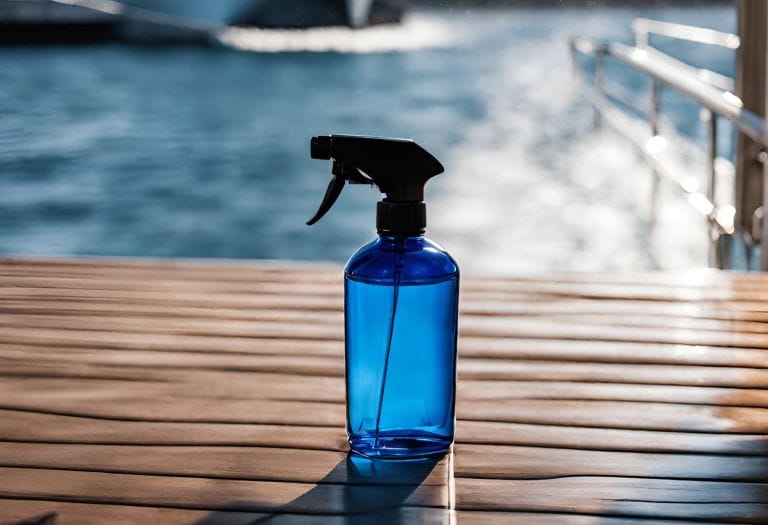
Green & Clean: 10 Vinegar Hacks Every Stew Should Know
Trending now.

Hey there! I’m Leanne, and I’m a seasoned professional with over 16 years in the yachting industry, having served as a Chief Stewardess and in dual roles like deckhand/stewardess and chef/stewardess…
Our socials
Popular posts.

First-Time Yacht Stew? Learn These 71 Terms

Professionalism in Yachting: Is Your Drinking an Issue?
COPYRIGHT 2024

Skills & Talents
- Natural leader
- Detail-lover
- Multitasking wizard
- Boss-level organizer
- Charming communicator
- Effortlessly elegant
Stay ahead in your stewardess career – sign up for our monthly newsletter packed with top tips, insider information, and stewardess secrets!
We will never sell your personal information.

- Charter & Brokerage
- Yacht Design & New Builds
- Tenders & Toys
- Superyacht Events Calendar
- Career & Training
- Departments
- Superyacht Crew Finances
- Sustainability
- Shipyards and Marinas
- Health & Wellbeing
- Polar Region
- Our Services
- Meet the Team
How To Prepare For Your First Yacht Charter As A Junior Yacht Stew
.png)
Your first time working as yacht crew on board a superyacht is always a daunting one. It’s an experience you won’t forget and can often feel like a blur with each day rolling into the next.
As a first-time junior stewardess, there are ways you can prepare for your first yacht charter which will, in turn, boost your overall confidence. From procedures you need to learn, to knowing how the boat operates, are the expectations of your role whether it’s laundry, housekeeping, service, or crew mess.

Top tips to help you prepare for your first yacht charter as a green crew:
- Familiarise yourself with the whole boat, from the names of each cabin to the different decks (Sun deck, Upper-deck, Owners Deck, Main Deck, Lower Deck), storage areas, and the yachting terminology such as port (left) and starboard (right).
- Stock up your cleaning caddy and be sure you know how each cleaning product is to be used. (For example, don’t spray alcohol or vinegar on marble surfaces).
- If you have access to guest profile pictures before they arrive, familiarise yourself with the charter guest’s faces and preferences. This includes which wine they love, how they like their laundry done, and any food allergies.
- Make sure you understand what’s required of you in your role, and if you’re not sure ask your chief stew. Is it your responsibility to look after the crew mess? Run guest laundry to cabins? Hoover the guest upper deck level? Bring in sunscreen baskets in the afternoon? These are all things to think about. Most organised vessels have a manual for each shift. If there’s no manual, you need to ask what’s required to ensure nothing is missed.
- Make sure you clear space in your cabin cupboard for on charter uniform, ensure you have all of the uniform (including an epaulette) and it’s all pressed and ready to go.
- If you’re in service, it’s good to create a table decor schedule. This allows you to prepare your table decorations in advance, enabling you to be organised the night before. With this schedule, you can edit your charter dates and table decoration themes, then save and print so you can refer to each day.
- If you’re in housekeeping, make sure you are familiar with the sheet change schedule. This is when each cabin is meant to have the sheets changed, whether it’s daily, every 2 or 3 days. Label it in calendar format so the laundry stew and housekeeping team are aware.
- Take the time to understand the laundry procedures specific to your boat. Who takes the guest’s clothes back to the cabin? What days can you put your clothes/towels/bedding in the wash? Where does the laundry stew want items put? Often there are systems in place, and you need to know them to ensure everything runs smoothly. If you’ll be doing some laundry on charter, make sure you understand how the machines work. Consider learning about how different materials are washed, how stains are treated etc. If you need an extra bit of help with laundry, then check out The Seaworthy Yacht Stewardess Online Course. With the laundry module, you will have all of the necessary information in a handy downloadable format.
- Ask about the procedure for when guests arrive. Often it’s a busy time for the heads of departments, however, for juniors, it’s a time in limbo where you can find yourself unsure of what to do. Find out where the luggage tags are stored, be ready to tag and unpack any guest luggage, make sure the luggage mats are out in the cabins, and if you have spare time, set up for crew mess meals or restock items. There is always something to do.
- If you’re going to be unpacking for the guests, ask your chief stew or head of housekeeping how they would like it done. For instance, find out how the cupboards are set out, which items are a priority to be pressed, how the clothes are to be hung on hangers, how the shirts are to be buttoned (usually it’s buttons 1,3, 5) etc.
- Lastly, if you’re in service, make sure you try and learn the wines, spirits and snacks you have available onboard. Guests will always be wanting to know what’s on offer, and you need to be able to provide them with all the important information.
Still not sure about how to prepare for your first charter or what to pack for the charter season? You can find exactly how to do this in the wardrobe management and guest packing/unpacking module in The Seaworthy Stew Training Course.
It’s always a busy time leading up to the first charter, but by following top tips on how to prepare for your first yacht charter, you’ll step into your role as a junior stew understanding what is required to meet the standards onboard.
I wish all the first-time stews reading this, the best of luck on your first charter! – Jess
Further advice on how to perfect your yachting CV can be found by clicking, here.
Related articles
The crew network: introducing their palma office, how easy is it finding yacht crew jobs as a couple, the crew network – top jobs this week, international women’s day 2024: hearing from the women in the superyacht industry.

Popular Posts
- 5 superyachts made famous by the movies
- The Edorado 8S Model: The Future Of Sustainable Luxury
- How To Handle Workplace Conflicts In Yachting
- Zero-Emission Catamaran Collaboration: Cambridge Uni & Propulsion House
- Anchor & Balance: Mindful Meditation For Yacht Crew On The Go
Superyacht Content
Social media influencer and digital brand expert.
Superyacht Content brings you the latest in social news for the superyacht industry.
Keep up to date with us across our social channels, and don’t forget to hit that share button!
- Superyacht News
- Superyacht Jobs
- Superyacht Marketing
Join our Newsletter
- Your Name First Last
- Your Email *
Copyright © 2023 Superyacht Content | Website Design by Zonkey
Privacy | Credits | Get in Touch

Get Onboard
Superyacht Training

Top Tips on How To Detail The Yacht Interior
Here are our favourite tips and tricks for getting that interior sparking...
Experienced stewardesses will tell you maintaining the interior of a superyacht is no easy task, so we have listed a few simple tips and tricks that might make you life onboard a little easier. Below we’ve outlined the most important terms to get to know…
When you hear detailing- think cotton bud and toothpick, and we aren’t kidding! Detailing involves the deep cleaning of absolutely everything to ensure even the smallest spot of dust on the yacht is removed from the yacht. When a guest steps onboard, it should feel like the yacht is brand spanking new, each and every time!
Heads or Day Heads:
This terms refers to a the bathrooms onboard
This terms refers to the kitchen onboard
While almost the entire yacht is continually polished, the term polishing for the interior department generally applies to silver wear, glasses, crockery and cutlery- but depending on your yacht owners individual style, it could mean a whole lot more.
Daily Interior Cleaning Tasks
The interior of a yacht is cleaned almost constantly throughout the day, especially if you have guests onboard. Here is a list of common tasks you can expect to complete throughout the day:
Your new BFF. On yachts you don’t only vacuum the floors, but in some cases the ceiling, walls, ornaments and finally the carpets. You’ll even vacuum the vacuum cleaner, and no we aren’t joking.
The best process for dusting, like vacuuming, is starting at the top and working down. Remove appliances from their surfaces, pickup objects off tables, nothing gets left untouched.
Windows and Mirrors:
You will quickly learn that mirrors and windows are some of the hardest things to clean, and keep clean. Ensure you spray your desired product onto a clean, dry, lint-free cloth. Use this cloth to wipe your product onto the window or mirror. Be sure to buff with a dry cloth in circular motions to ensure no dirt or residue was left behind.
Silver and Glass Wear:
Be sure to wash the object with a sponge and warm soapy water for glass, rinse well to remove all residue and buff dry straight away. For silver, you’ll want to do the same but incorporate a weekly silver polish solution.
Still think you are cut out to be a yacht stewardess? Thats’s great! Why not head over and learn more about our detailed stewardess course , guaranteed to prepare you for all the tasks required of you onboard. For more information Contact Us to find out how you can get started.
Needing more?
Error: Contact form not found.
RYA/MCA Online
1. what are the basic requirements you need to be eligible to work in the yachting industry, 2. what is the stcw and why do i need it, 3. what is the eng1 medical certificate, 4. what land based experience will help me find a super yacht job, 5. what are the different departments onboard, 6. what crew training is required for me to work as a junior deckhand.
- Yachtmaster/Coastal Skipper Theory
- Yachtmaster/Coastal Practical
- Specialist Super Yacht Training Course (Deck Hand Training Course)
- RYA Power Boat Level II
- RYA Personal Watercraft Course
- RYA Competent Crew Certificate
- RYA Day Skipper Theory and Practical Certificates
- VHF Radio Operator’s License
7. What crew training is required for me to work as a junior stewardess?
- Stewardess Course
- Proficiency in Designated Security Duties (PDSD)
- MCA Food Safety Level 2
- RYA Powerboat Level 2
8. How do I book my training courses?
9. how do i get my first job on a yacht, 10. are these courses worth it, or am i just wasting my money, 11. will i get hired for my first job from south africa, 12. what is daywork, 13. what are the best locations to get a yacht job, 14. how much can a motor yacht stewardess or deckhand earn, 15. what are the negatives of working on a yacht, 16. what are the positives of working on a yacht, 17. is working on a super yacht for everyone, 18. what is the minimum age to work on a yacht, 19. is accommodation provided when i am completing my yacht training in cape town.

Take the course at our own pace, all online.

Everything you need to KNOW TO GUIDE YOU ON THE RIGHT PATH TO PROFESSIONAL YACHT STEWARDEss.
Yacht stewardess, the seaworthy.
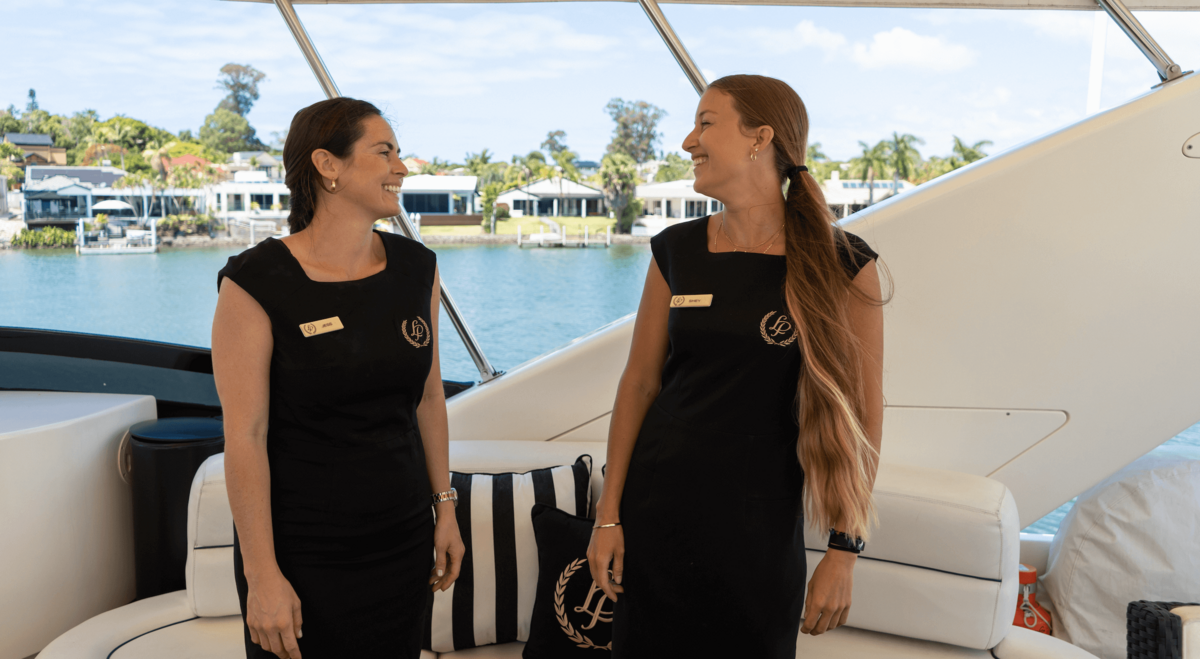
Training Course
But you lack the confidence in your stew skills (after all they are so specialised), and you want to make yourself more desirable for the job hunt! You want to impress your chief stew and have been practicing all the napkin and toilet paper folds you can find.. But the reality is, your stew skills aren’t up to scratch and you’re feeling under prepared to embark on this new yachting journey!
You truly believe in what you have to offer, and you know that you are going to make an amazing yacht stew...
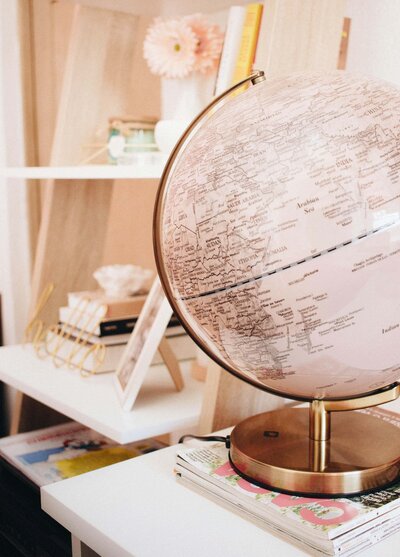
The self doubts kicking and you know you can't keep up the fake it till you make it facade when stepping into a stew role onboard
You’re not feeling as prepared as you would like when it comes to starting out in the yachting world
You’re still left wondering how to do all the stew things the right way to impress your chief stew
You want to be the most desirable candidate for the job yet still unsure what you need to learn
You’ve started getting closer to your dream of becoming a yacht stewardess BUT....
Let me guess..
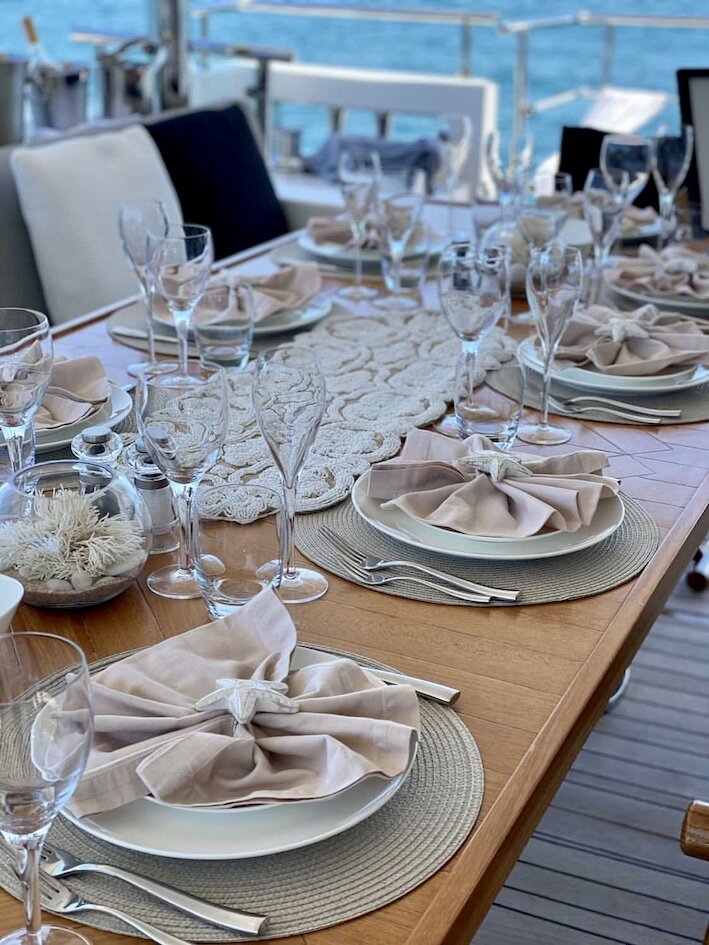
Girl...here's The thing. You're not alone. I've been exactly where you are and I can tell you from chief stew to junior stew it doesn’t have to be this way.
Achieve your dream stew job faster with the right training and tools on hand Have FIVE STAR feedback from your chief stew (Hello amazing CV) Make a good name for yourself as once you’re in the industry, your reputation is your resume! Have the confidence to start a new stew job and tackle all the yachting industry throws at you. You got this!
Let's get you ready for your new dream stew job. Throw in the bowlines because you can:
I'm talking about learning the interior skills that usually take years to master (and mistakes made along the way). because you deserve an experience that allows you to start your yachting career on the right foot. one where you can climb the ladder faster than you can open a bottle of dom pérignon for the guests. it's possible, hold tight, as i’ve got the secrets (and the tools) to unlocking your stew potential.

Wondering how you can achieve these game changing outcomes? I thought you’d never ask...
Word on the street is if you're ready to start your new stew career with confidence then I'm here to show you how. Inside this training course you'll FIND:
Learn how to be a professional yacht stewardess with video training, downloadable checklists and tools to help you as a junior stew. This course teaches the need to know practical side to working in the interior on a yacht from housekeeping, cleaning, laundry and service to table settings, food and beverage, flower care and more!
Training course.
From how to keep the orchids alive onboard to housekeeping and cleaning tips to save you time, organising a guests wardrobe, laundry hacks, table setting, service cheat sheets + more!
INDUSTRY SECRETS
Learn the practical side to service training, housekeeping, turn up and turn down service, bed making, ironing, correct ways of cleaning and products to use, barista coffee making, wine service and more!
VIDEO TRAINING
This course will ensure you are ready for a yacht stewardess role, with 10 tailored interior modules taught by a chief stew with 6+ years experience. It will give you the skills + the professional know-how so you stand out on the CV pile .
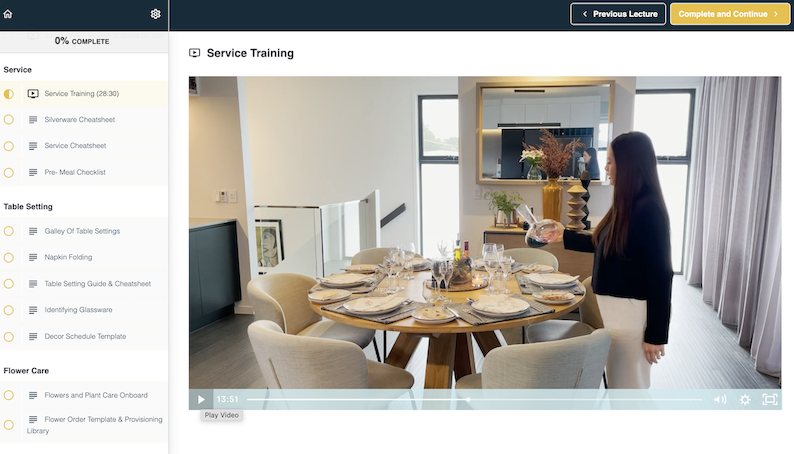
That's not all, when you join the program you'll also receive these bonuses:
The different service roles onboard Setting your mise-en-place Correct Sequence of Service Learn the four main types of service -Silver service, plated, synchronised and buffet as well other styles used onboard. Silverware cheatsheet to remember all the items BONUS: Pre-meal checklist
Managing Crew and Guest laundry Laundry products used and correct amounts to add in Tips to improve laundry efficiency Daily checklist How to clean laundry machines Superyacht laundry care and stain treating guide How to correctly iron (Linen, Guest Clothes, Uniforms) and use the machines from the roller to steam iron to other machines used onboard
Cleaning tips to improve your efficiency Using the correct products on surfaces What goes in a cleaning caddy Hoover parts and cleaning guide Looking after luxury materials Correct treatment of silverware onboard from industry experts- Langfords
Video training Housekeeping Manual Guest Turn up and Turn down Detailing Guide Bed Making Tutorial Guest Luggage (Unpacking and Packing) Wardrobe Management Performing maintenance duties onboard How to stow a boat correctly
Housekeeping
Gallery for inspiration Napkin folding guide Table setting guide The correct glassware to use Table Decor Schedule to organise your daily themes
Table Setting
How to care for flowers and plants onboard Provisioning library Flower ordering template
Flower Care
Barista coffee video tutorial Tea Types and brew Guide Learn all about wine and how to correctly serve it Cocktail Recipes + garnishes Bar set up checklist
Food & Beverage
Certificate upon completion of the course, for a full outline of the course curriculum click here.

valued at $220
The easiest provisioning template you’ll ever use to keep the boat organised. Can be used for food & beverage, toiletries, cleaning products, laundry products, stationery and more! Adjust it to suit your boat, enter your ideal quantity to have onboard and it will calculate how much to order and when items are soon to go out of date.
The best provisioning template in the industry
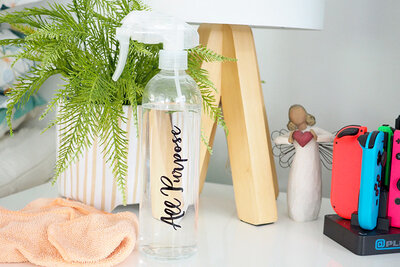
valued at $190
You will learn the tips and tricks that only come from years of experience in maintaining a superyacht to five star luxury standards. As well as access the full list of cleaning products used onboard and what surfaces they can and can't be used on.
Masterclass: Chief Stew cleaning essentials
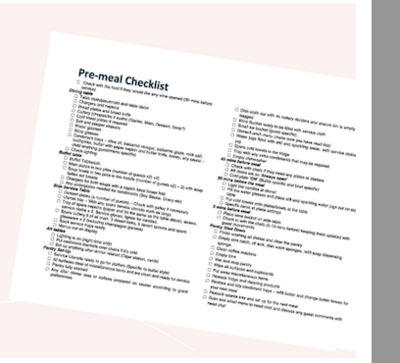
valued at $120
You don’t have to remember it all with this tick as you go checklist. From setting up your mise-en-place to everything that needs to be on the table, how a pantry needs to be pre-service and timer check ins- what's required 45 mins, 30mins and 5 minutes before a service.
PRE-MEAL CHECKLIST- AKA SERVICE LIFESAVER

valued at $130
Direct access to the international crew agencies database filled with over 50 agencies address, phone, website, email and job boards. Sending your CV out for jobs has NEVER been easier.
Worldwide list of Yacht Crew Agencies

Includes The Seaworthy Yacht Stew Training, The Yachting Kickstarter Guide and CV Toolkit
3 course bundle
Limited offer
Save when you pay in full. Payment plan available contact [email protected]
One-time payment of
So, are you ready to stop dreaming and start doing .
Usually $655
I help aspiring yachties (just like you) confidently break into the industry by teaching what is required to prepare for a career as yacht stewardess, the proven steps to successfully land your first job, AND how to survive and thrive in this unique industry. My passion for helping junior crew is fuelled by the belief there is a world of possibility out there if you're willing to chase it. My courses are based on practical knowledge and tools which will help you succeed in your new dream role. Yachting is the best career move I ever made and now I get to SHARE all my knowledge with junior crew on how to break into this incredible industry with confidence. I hope to be able to support you along your yachting journey.
An Australian Chief Stewardess with six years experience in the Superyacht industry.
Hey, i'm jess. , meet the face behind the seaworthy stew .

PROUD MEMBER OF
Featured in:.

There are so many possibilities waiting for you. I can't wait to share with you the tools and knowledge that helped me have a very successful career in yachting! All you gotta do is join me inside The Seaworthy Yacht Stewardess Training Course. See you in there?
Imagine: Having NO more doubts The confidence to succeed BEING GUIDED BY A CHIEF STEW AND HAVING THE SUPPORT BEHInD YOU ALL THE WAY New skills for your CV
I'll be your biggest cheerleader...
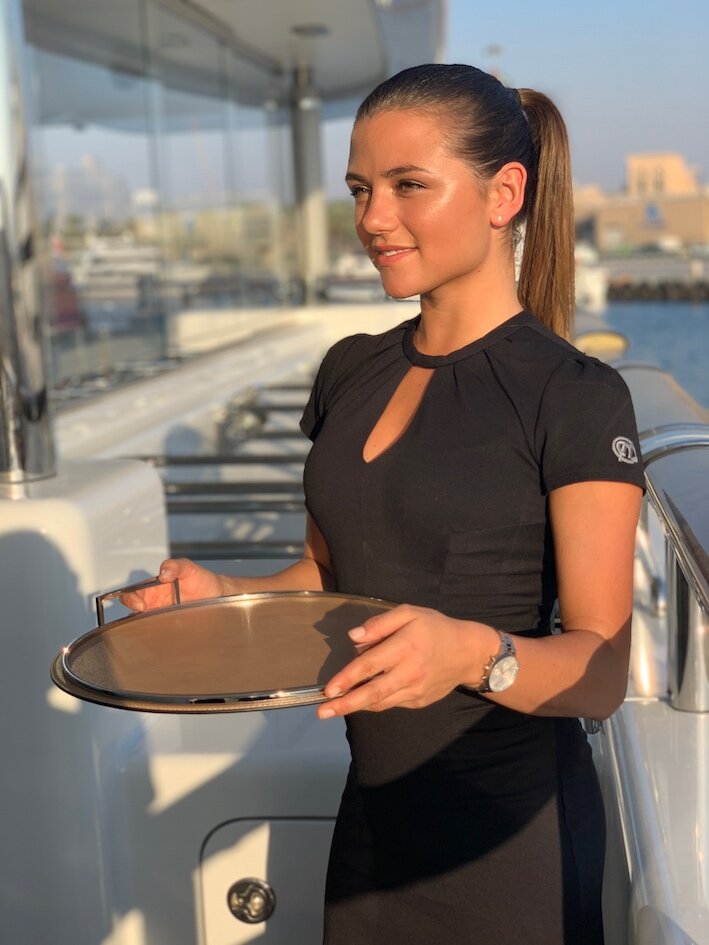
Includes practical modules, checklists and cheat sheets to make life onboard so much easier
VIDEO MODULES TO REFER BACK TO WHEN YOU NEED
Made by a Chief stew for junior stews
100% remote learning (take it at your own pace), say goodbye to trying to lock in course dates that don't fit your schedule
Don't pay thousands of dollars for training that leaves you still feeling lost. Here are some of the ways THE SEAWORTHY STEW SCHOOL is different:
The Seaworthy Yacht Stewardess course is like no other. Based 100% online, with practical skills and theory to help you build your skills for your dream career.

Ask Jess Anything!
Yes, you will receive a certificate with the date to show when you completed The Seaworthy Stew Yacht Stewardess Course.
WILL I GET A CERTIFICATE AFTER I COMPLETE THE STEWARDESS COURSE?
It depends how much experience you have in all departments (Housekeeping, laundry & Service). If you have been in the industry less than 6 months this course would be very useful for you. OR if you are a SOLE STEW and need guidance and tools to help you run the interior as efficiently as possible.
DO I NEED THIS COURSE IF I AM AN EXPERIENCED STEW?
Currently there is no qualification, instead when you complete this course you gain a certificate of completion from The Seaworthy Stew School which can be used for supporting documents and on your CV. We are working on the accreditation process as a part of the G.U.E.S.T Program.
DO I GET A QUALIFICATION AFTER I FINISH THE COURSE THAT I CAN ADD TO MY CV?
With 10 Interior modules there is A LOT of information to access, I recommend breaking it down into bite sized chunks and go through the modules when you can. The content is designed so you can refer back to and use the checklists and cheat sheets when needed throughout your stew career.
HOW LONG DOES THE TRAINING TAKE?

You are already in a great stew position onboard and have years of experience under your belt. You don't like checklists, manuals, cheat sheets and practical training. All these things are totally essential to all things stewardessing! You are wanting to pursue a role of a deckhand or engineer onboard. The job role is very different to being a stewardess.
This program is for aspiring and junior stews. It's not right for you if:
to fast-track her career, leading to better boats with bigger pay cheques.
ready for all the industry throws at her. and willing to take action.
a junior stew who is looking to start her dream stew career with confidence.
This program is right for you if you're ready to stop dreaming and start doing. You're in the right place if you are:
What other's say about the course....
Chanel Hobbis
I’ve been in the industry for over a year now and found your junior stew course so helpful, enriching and informative. The information, videos, and the guides are amazing and I would highly recommend the course to anyone wanting to further their knowledge in yachting! It’s an amazing stew course! So glad I completed it, I now feel so much more confident and I have learnt a lot of new tricks! Thank you Jess.

JUNIOR YACHT STEWARDESS
Elle Westhoff
I’m soooo impressed with the Seaworthy stews new junior stew course! Jess has covered absolutely everything you need to know in order to kickstart your career as a stewardess in the yachting industry. I wish there were something like this out there when I started off and can not recommend it enough! From video training and downloads that are super helpful when starting out. This course has all the fundamentals of being the best stew you can be including housekeeping, laundry and service in major detail! If you are looking into taking the leap of faith of starting your dream career as a superyacht stewardess. Look no more because Jess has you covered!

FROM A CHIEF STEW WITH OVER 6+ YEARS EXPERIENCE
Sophie, UK
Wow, just finished The Seaworthy Yacht Stew Course and I just want to say thank you for putting it together. I absolutely loved learning about all the topics and will be going over each part, again and again, the go-to guides are such a valuable resource. This is stuff I really wanted to know about, I’ve taken so much from this course. Absolutely brilliant and worth every penny!

WORTH EVERY PENNY!
Jess's course covers all the things I wish I knew when first starting my yachting career. As a chief stew for 5 years now I can say combining all these foundational skills with the added support and downloads is one priceless resource to help junior stews really understand what to do and how to do it well and I would highly consider hiring someone who has been through The Seaworthy Yacht Stew Course! I've personally worked with Jess and she knows her stuff! It’s fresh, modern and everything you need to impress, I’ll be looking for this training on cv’s next time I’m trying to find the perfect stew.

"I’ll be looking for this training on cv’s next time I’m trying to find the perfect stew."
This course will ensure you are ready for the yacht stewardess role, with 10 tailored interior modules taught by a chief stew with 6 years experience. It will give you the skills + the professional know-how so you stand out on the CV pile . The Seaworthy Yacht Stewardess Course is designed to set you on your pathway as a professional yacht Stewardess and will make you a desirable candidate for the job.
Let's get you job ready! Learn everything you need to step into your new stew role with confidence.
So what are you waiting for.

Limited Offer
Save when you pay in full. Payment plan available contact [email protected]
(Usually $655)

Got questions? Let's chat!

© 2020 THE SEAWORTHY STEW
Fit Mommy In Heels
How To Become A Yacht Stewardess: A Complete Guide
If you have ever wanted to trade in your 9-5 for a life of working on a luxury yacht, traveling the world, and meeting interesting people?
Well, then a career as a yacht stewardess might just be for you! Sounds like a dream, right? In this guide, we’ll dive deep into the world of yacht stewardess jobs and explore the ins and outs of the yachting industry.
From the daily duties and required training to interview tips and a step-by-step guide to becoming a successful yacht stewardess, I’ve got you covered.
Let’s get that dream job rolling!

What is a yacht stewardess?
First off, you might be asking yourself “what is a yacht stewardess anyways?” Of course, this is important information to know if you’re looking at becoming one! The yacht stewardess is an integral part of the interior crew on private yachts and charter yachts.
They are responsible for providing top-notch customer service to yacht owners, their guests, and charter guests.
A stewardess is an entry-level position that often serves as a stepping stone to more senior roles, such as chief stewardess, in the yachting world.

How much do stewardesses make on a yacht?
The pay of a yacht stewardess can vary greatly based on a lot of things such as the size of the yacht, where it is located, and how many years of experience they have.
Generally, if you’re just starting out, you can expect to make around $2,500 to $4,000 per month.
More experienced stewardesses and chief stewardesses usually make more money.
Plus, yacht crew members often get tips from yacht owners and charter guests, which can really add to their income.
Here are some key factors that can affect how much a yacht stewardess makes:
- Position: Chief Stewardess, the person in charge of the inside of the yacht, usually makes more money than the other entry-level stewardesses.
- Experience: It probably goes without saying, but the more experience you have as a stewardess, the more money you’re likely to make since you’ll have better skills and know more about the job.
- Location: Pay can also vary depending on where the yacht is. For example, some areas (like the Mediterranean) might pay more because there’s more demand and/or fancier yachts.
- Charter Yachts vs. Private Yachts: Working on charter yachts can be a good way to earn tips from guests, which can really help increase your income. On private yachts, you might not get tips, but the pay could be more steady and reliable.

What does a Yacht Stewardess do every day?
The duties of a stewardess can vary, but they generally revolve around maintaining the interior of the yacht, tending to the needs of the yacht owners and guests, and ensuring a pleasant onboard experience.
Some of the responsibilities can include:
- Guest service and hospitality: Greeting guests, assisting with their luggage, and providing personalized services throughout their stay on the yacht.
- Housekeeping and maintenance: General housekeeping tasks such as cleaning guest cabins, bathrooms, and common areas, as well as laundry and ironing.
- Food and beverage: Serving meals and drinks, setting tables, and helping the chef with menu planning and food preparation.
- Event planning: Organizing and coordinating onboard (or off-board) events and parties for the yacht owners and their guests.
- Safety and emergency responsibilities: Participating in safety drills and being prepared to handle emergency situations, including fire fighting and personal survival techniques (which is part of the required education we’ll get to below).
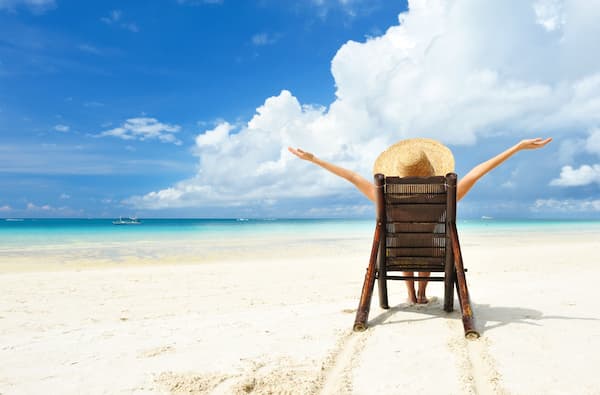
Benefits of Being a Yacht Stewardess
Being a yacht stewardess has a lot of amazing benefits that make it a great and exciting career choice – especially while you’re younger.
One of the best parts is the chance to travel to beautiful places and experience different cultures while you work.
You’ll get to see stunning beaches, lively cities, and amazing coastlines all around the world. Plus, the pay is usually pretty good, especially on a charter yacht where you can receive tips from your guests.
Since your living costs like housing and food are covered when you’re on the yacht, you can save more of your earnings.
Another great thing about being a yacht stewardess is making new friends. You’ll work closely with your fellow crew members from all over the world while living and exploring together.
Don’t get me wrong, the job certainly can be hard sometimes, but the fun experiences, personal growth, and adventures you’ll have make it all worthwhile.
As a yacht stewardess, you’ll get to enjoy a unique and fulfilling career that’s anything but ordinary.
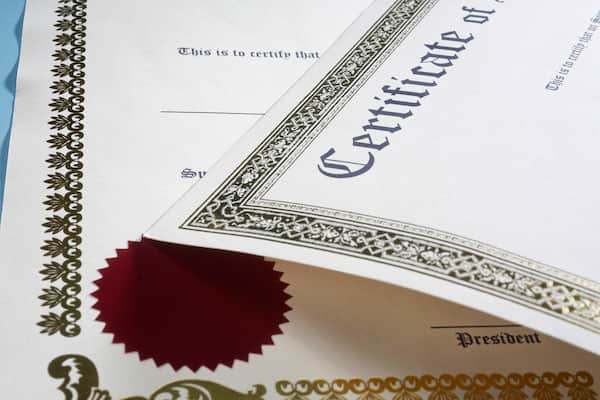
Education and Certifications Required for Yachting
While there isn’t a specific degree required to become a yacht stewardess, there are some basic qualifications and certifications that you’ll need to be eligible to be hired as a yacht stewardess:
- The cost of this course in the United States is typically around $1,000 and takes about 5 days to complete.
- Check with the Maritime authority in your specific country for specific requirements.
- ENG1 Medical Certificate: The ENG1 is another mandatory medical certificate for yacht crew members. It confirms that they are physically and mentally fit to work on a ship. The testing for this cert will involve a health examination by an approved medical practitioner.
- Additional training courses (possibly): Many aspiring yacht stewardesses choose to complete an interior course, which provides valuable training in various aspects of the job, from table setting and service to housekeeping and laundry room management. This makes them more desirable in the job search and may even be an employment requirement for some yacht owners.

Lifestyle of a Yacht Stewardess
Working as a yacht stewardess can be an exciting and glamorous career, however, it’s important to remember that it also involves long hours and hard work.
You’ll often work 12+ hour days and may be required to be on call 24/7 during busy periods. Living arrangements onboard in the crew house can also be tight, with crew members often sharing small cabins.
Despite these challenges, the lifestyle offers many perks, such as the opportunity to travel to beautiful places, meet new people regularly, and gain invaluable work experience in a very unique industry.
Plus, you’ll have plenty of time off between charters or during the off-season to explore your surroundings and enjoy your hard-earned vacations, and who can complain about that?!

Previous Work Experience
While you can enter the yachting industry with zero experience (aside from the educational requirements above) the industry is extremely competitive.
Having some background in customer service, hospitality, cruise ships, or even high-end restaurants can make you a more appealing candidate to potential employers and yacht owners.
Experience in housekeeping, event planning, or any role that demonstrates your ability to be a team player, showcases your attention to detail, and highlights a strong work ethic will serve you well in your pursuit of a yacht stewardess position.

How To Become A Yacht Stewardess
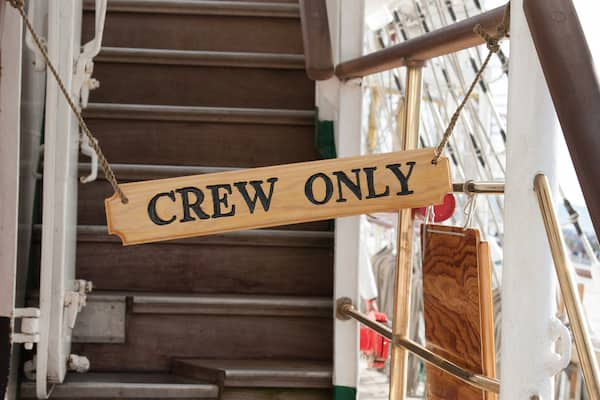
12 Steps To Becoming A Yacht Stewardess
The best way to become a yacht stewardess is to prepare yourself from all angles. Here are the 12 steps to becoming a yacht stewardess.
- Research the yachting industry: Understanding the yachting world is very important for aspiring yacht stewardesses. Educate yourself on various roles onboard (e.g., captain, deckhand, chef, engineer), the types of yachts (motor yachts, sailing yachts, private or charter yachts), and the unique lifestyle associated with working on yachts, such as long hours, tight living quarters, and seasonal schedules.
- Obtain necessary qualifications and certifications: The STCW (Standards of Training, Certification, and Watchkeeping) Basic Safety Training course is mandatory for working on yachts. This course covers essential safety procedures, first aid, and firefighting. Additionally, obtain a medical certificate (such as ENG1) to prove you’re fit for a job at sea.
- Acquire relevant work experience: Experience in customer service based positions is super valuable for yacht stewardesses, as it showcases your ability to provide exceptional service and adapt to a demanding work environment. Gaining experience in restaurants, housekeeping, or event planning can also strengthen your resume.
- Develop your skills and personal qualities: Because the yachting industry is so competitive, it’s essential to showcase adaptability, excellent communication skills, and professionalism. Being a team player, having strong attention to detail, and being able to anticipate guests’ needs before they need them are what yacht owners will be looking for in a stewardess.
- Network with industry professionals: Attend boat shows, yachting events, and join online forums (such as facebook groups) to connect with fellow crew members, crew agents, and yacht owners. Building a strong network can open so many doors to job opportunities and provide various insights into the yachting industry.
- Prepare a strong CV and references: Create a yacht-specific CV that highlights your relevant experience, certifications, and personal qualities that make you an ideal candidate for a yacht stewardess position. (We’ll touch on this more below).
- Register with yacht crew agencies: Reputable crew agencies can help match you with suitable job opportunities. Registering with multiple agencies increases your chances of finding the perfect job.
- Attend boat shows and yachting events: Popular yachting hubs like Fort Lauderdale and Newport host annual boat shows that attract yacht owners and crew members. Attending these events – or even moving to a yachting hub – can help you network, learn about the latest industry trends, and discover job opportunities.
- Be persistent in your job search: You may have to apply for day work or temporary positions on a smaller yacht to gain valuable experience while looking for a permanent role. This can also help you build your resume and make connections within the yachting world.
- Prepare for interviews: You should be thoroughly prepared for your interviews by researching the specific yacht and owner. You also will need to dress professionally, and be ready to demonstrate your passion for the industry. Be prepared to answer scenario-based questions and showcase your problem-solving abilities.
- Accept your first job offer and learn on the job: Be open to starting on smaller boats or even taking temporary positions to gain experience and prove yourself in the industry. Each yacht and crew are unique, so be prepared to learn and adapt as you go. You can use every experience you have as a boost into a more permanent career.
- Keep improving and advancing in your career: Pursue additional courses, certifications (e.g., wine knowledge, flower arrangement), and networking opportunities to grow your skillset and advance in the yachting world. Continuously improving your skills will make you a more desirable candidate for higher-level positions and more prestigious yachts, thus more compensation.

Tips for Crafting the Perfect CV for Your Yachting Job Search
You’ll often hear the term CV as opposed to resume in your yacht job search.
A CV is typically more in-depth than a resume and is often used for academic or research positions or when applying for jobs in Europe and other regions outside the United States (which is often the case with yachting).
Creating a yacht stewardess-specific CV is vital to standing out among other applicants in such a competitive world. Here are some tips to help you craft a CV for your job search:
- Start with a strong personal statement: Summarize your career goals, relevant experience, and personal qualities that make you an ideal candidate for a yacht stewardess position.
- Highlight your yachting qualifications and certifications: List your STCW Basic Safety Training, medical certificate, and any additional courses or certifications relevant to the yachting industry (e.g., interior course, wine knowledge, etc.). This shows your potential employer(s) that you’re serious!
- Show off your relevant work experience: Focus on previous experience in customer service and/or hospitality, or any other industries you have experience that would be applicable to the yacht stewardess role, emphasizing skills like housekeeping, guest service, and teamwork.
- Emphasize your skills and personal qualities: Highlight your adaptability, attention to detail, strong work ethic, and ability to work as part of a team. These qualities are crucial for a successful yacht stewardess!
- Customize your CV (or resume) for each application: Don’t be afraid to switch it up! Customize your CV for each yacht stewardess position, emphasizing aspects that best match the specific job requirements based on the research you’ve done.

Interview Tips for Yacht Stewardess Positions
- Research the specific yacht and owner: Familiarize yourself with the yacht’s size, style, and itinerary to customize your answers and demonstrate that you have a genuine interest in the position.
- Dress professionally and appropriately: You should go for a polished and conservative look that reflects the high standards of the yachting industry.
- Showcase your skills and experience: Just as with your CV, you should highlight your relevant work experience, certifications, and personal qualities that make you the ideal stewardess for the job.
- Be prepared for scenario-based questions: Interviewers may ask how you would handle specific situations, such as dealing with difficult guests or emergencies on board – try to be prepared for them.
- Demonstrate your passion for the industry: Show enthusiasm for the yachting lifestyle and convey your dedication to providing exceptional service to yacht owners and guests.

Yacht Stewardess FAQs
Is it hard to become a yacht stewardess.
Becoming a yacht stewardess can definitely be challenging due to how competitive the industry is.
However, if you’re passionate about it and with a bit of persistence, networking, and relevant experience, it’s certainly achievable.
How do I become a yacht stewardess with no experience?
To become a yacht stewardess with no experience, you should start by completing the STCW Basic Safety Training, acquire a medical certificate, and begin to work towards gaining experience in customer service or hospitality to build a strong foundation.
How do I start a career as a yacht stewardess?
To start a career as a yacht stewardess it’s important to research the industry, obtain necessary certifications, gain relevant work experience, network with industry professionals, and apply for yacht crew positions.
How long is yacht stewardess training?
The good news is that yacht stewardess training, such as the STCW Basic Safety Training, typically only takes around one week to complete.
Keep in mind that each yacht owner may require (or prefer) that additional specialized courses be completed.
What is the average age for a stewardess on a yacht?
The average age for a stewardess on a yacht can vary, but it’s most common to see individuals in their early 20s to mid-30s working on yachts in this role.
How long is a yacht crew shift?
Again, yacht crew shifts can vary, but it’s not uncommon for crew members to work very long hours. Sometimes up to 12-16 hours a day, depending on guest requirements and yacht size.
Do yacht stewardesses work year round?
In general, the yachting industry is more seasonal though the “seasons’ vary based on location. The winter season won’t be nearly as long in some parts of the world as it will be in others.
Do yachties get a salary or just tips?
Yacht crew members typically receive a salary, but on charter yachts, they may also earn tips from guests, which can significantly boost their income.
Becoming a yacht stewardess may seem like a daunting task with many steps and competition, but with persistence, a lot of hard work, and the right attitude, you can absolutely turn your dream job into a reality.
I hope this guide helps you achieve your goals and embark on a thrilling and rewarding career in the yachting world.
More Posts You Might Like
- What to Wear Sailing: The Ultimate List
- The Ultimate Work Capsule Wardrobe Guide
- The 11 Best Designer Tote Bags For Work
- How to Build a Classic Summer Capsule Wardrobe

Emilee is a writer and mom living in Northern Nevada. She enjoys spending her time in the kitchen whipping up new recipes, camping with her husband and sons, and getting her day started with early morning yoga sessions.
Similar Posts

The Best Glamping Accessories & Furniture For Luxury Camping
As an Amazon Influencer, I earn from qualifying purchases. This post may contain Amazon, Rewardstyle, and other affiliate links. That means if you click and buy, I may receive a…

260+ Best Short Instagram Captions To Use In 2023

The Best Fathers Day Gift Ideas For Your Husband

Gender Reveal With Confetti Cannon Roulette

The Best Unique & Cool Father’s Day Gifts For 2023

20 Things To Stop Buying To Save Money

Housekeeping Articles

What is Turndown Service
by Kylie O'Brien | Mar 22, 2024 | Housekeeping , Yacht Crew Training
Welcome aboard, the epitome of luxury and refinement in the realm of superyachts. As we sail through the azure waters, our commitment to unparalleled hospitality shines brightly, encapsulated in the timeless tradition of Turndown Service.

The Superyacht Guest Compendium
by Kylie O'Brien | Dec 9, 2019 | Housekeeping
The superyacht guest compendium provides guests with vital information, in a simple, elegant and effective way.

Small Space – Storage Solutions
by Kylie O'Brien | Sep 12, 2019 | Housekeeping
As a super yacht stewardess you are required to be very creative with your small space storage solutions. The storage area needs to be clean, dry and easily accessible…. Which, let’s face it, is quite often NOT the case…..

How to Reduce Plastic Use
by Kylie O'Brien | May 9, 2019 | Housekeeping , The Superyacht

How to Clean a Dishwasher
by Guest Author | Mar 21, 2019 | Housekeeping
How to Clean a Dishwasher. Dishwasher maintenance is far from glamorous, but it is something that every yacht stewardess must do on a regular basis

How to Clean a Washing Machine
by Guest Author | Mar 3, 2019 | Housekeeping
As a part of our March Maintenace Month. This article will discuss ways in which you as a superyacht stewardess can maintain the equipment onboard the yacht to a high standard. Starting with How to Clean a Washing Machine.

Cleaning with Vinegar
by Kylie O'Brien | Apr 4, 2017 | Housekeeping
Vinegar is like the super cleaning product of the yachting world, and it can be used for all kinds of things. In this article, we will explore some do’s and don’ts of cleaning with vinegar.

Why a Superyacht Stewardess Should Not Flush Tampons Down the Toilet
by Kylie O'Brien | May 3, 2016 | Housekeeping
Why a superyacht stewardess should not flush tampons down the toilet The menstruation cycle of a woman is a normal monthly occurrence. However, it is not a topic that is readily discussed amongst men, especially not seafaring men. Nonetheless, in the Superyacht industry, it is the engineers (typically men) who have to sort out the problem when women dispose of their feminine hygiene products in correctly.

How to Clean Vomit From Carpet
by Kylie O'Brien | Apr 4, 2016 | Housekeeping
Both guests and crew may succumb to seasickness at some point in the journey, so Every Superyacht stewardess will need to know how to clean vomit.

How to Care for Lacquered Wood
by Kylie O'Brien | Mar 30, 2015 | Housekeeping
How to Care for Lacquered Wood. A lacquered wood surface is a surface that has been painted with a resin type substance which leaves the furniture with a hard, highly polished and lustrous surface.

How to Detail Clean a Cabin
by Kylie O'Brien | Mar 24, 2015 | Housekeeping
How to Detail Clean a Cabin. Detailing, or detail clean, is to clean the fine points, specifics, technicalities and subject. It means basically to clean thoroughly.

Laundry Instructions
by Kylie O'Brien | Mar 20, 2015 | Housekeeping
As a Superyacht stewardess, there is just no way of getting around NOT doing the laundry! This is probably not the most glamorous subject to talk about, but it’s a subject that has caused me a lot of grief over the years.

How to Care for Fine Art
by Kylie O'Brien | Mar 18, 2015 | Housekeeping
How to Care for Fine Art. Superyacht stewardess requires proficiency in areas of housekeeping, knowledge of fine materials and technical skills associated with the maintenance of a super yacht interior.

Easy Ironing Tips
by Kylie O'Brien | Mar 12, 2015 | Housekeeping
Easy Ironing Tips. In general most people don’t learn to iron properly until they leave home and it is one of those household chores that you either love or hate; furthermore it is a never-ending daily chore that a stewardess must face. Below are 10 tried and tested ways on how to save time ironing:

How to Clean Glass and Mirrors Whilst Maintaining Your Sanity.
by Kylie O'Brien | Mar 10, 2015 | Housekeeping
How to Clean Glass and Mirrors Whilst Maintaining Your Sanity. Cleaning glass and mirrors can be a real nightmare. Here are some useful tips that will leave your glass and mirrors streak free and sparkling.

Wardrobe Management
by Kylie O'Brien | Mar 5, 2015 | Housekeeping
Wardrobe Management. As a super yacht stewardess you should have this routine so well organized that nothing will faze her cool calm demeanor.

How to Launder Bodily Fluids
by Kylie O'Brien | Sep 30, 2014 | Housekeeping
We protect our clothes as well as our carpets with the hope that they attract no stains. However, try as we might, accidents can happen and in a flash, we spill juice or coffee on our clothes and rugs.
There are other stains that are more difficult to remove and they include blood and pet urine, which can really stink and mess up our carpets.
How to Clean Leather Furniture.
by Kylie O'Brien | Jun 3, 2012 | Housekeeping
Cleaning leather doesn’t have to be a difficult task….I believe less is more and if it’s just general cleaning then try the method below.
The Stewardess Bible
Housekeeping perfection – module three.
This book has been written on the premise that the super yacht stewardess requires proficiency in areas of housekeeping, knowledge of fine materials and technical skills associated with the maintenance of a super yacht interior. The super yacht industry demands highly skilled professionals who are able and educated enough to handle such a task.
The book presents the types of expertise required to fulfil the duties of a housekeeping stewardess: housekeeping procedures, yacht operational procedures and technical operations.
Part one is geared towards the managerial aspect of the job, covering the mind-set of a housekeeper, how to stay focused on the job, housekeeping operational procedures and guest relations.
Part two deals with laundry operational procedures, including crew uniform management, equipment maintenance inventory techniques and difficult stain removal.
Part Three and four is dominated by the technical details; discussing in depth the array of materials found in a superyacht interior and how to maintain them.
The Appendix is a collection of tools, tips and tricks that will allow the stewardess to fulfil her duties with ease. Included in this section you will find checklists, sample inventories and work lists.
Free Shipping Worldwide! Conditions Apply. Dismiss

What Do Yacht Stewardesses Do? (Daily Tasks Explained)
Are you considering working on a yacht or are you just curious as to what the crew actually do all day long?
What Do Yacht Stewardesses Do? Yacht stewardesses do a wide variety of practical tasks onboard the yacht such as:
- Housekeeping
- Waitressing
- Entertainment
- Crew support
- Maintaining the yacht
- Valet tasks and guest service
- Human resources
Here are more details on the tasks yacht stewards and stewardesses do on a daily basis onboard the yacht.
Table of Contents

1. Housekeeping
Stewards and stewardesses work to help the yacht run ship shape. They will work to keep common areas neat and clean. Laundry might also be part of their day to day tasks.
Detailing and cleaning windows might be some of the responsibilities that they will tackle.
Other housekeeping tasks include:
- cleaning bathrooms,
- making beds,
- washing linens
They’ll need to keep all interior storage areas neat and clean, and also to be able to keep track of inventory and restock as needed.
As guest use supplies, they will make a note of this and help to replenish any necessary materials.
Stewards and stewardesses will spend time polishing, dusting, straightening up and in general keeping house.
Every day they will go in guests’ cabins and clean their space as well as their personal belongings.
They will make sure that make-up containers look brand new, and scrub all the corners down, so the room is spotless and clean
2. Waitressing
Before and after eating, stewards and stewardesses will keep things organized. They’ll assist during meals and cleanup. As well as assisting in picking out what will be eaten, they will serve food to guests and organize the area after meals.
Behind the scenes, stewards and stewardesses work with the chef to create a meal plan that the guests will enjoy.
Stewards and stewardesses will help in selecting and purchasing cigars, teas, or wine, which may require expertise.
With occasional guest dinner parties, they will also assist in planning activities and the menu.
There are five different styles of service that a steward or stewardess will need to master. The first is the English service. This is where a server will transfer food to the diner’s plate.
The other types of service that they must excel in are buffet service and silver service.
3. Entertainment
With guests, they’ll keep high energy and be professional at all times
This role involves maintaining proper etiquette. Stewards and stewardesses may assist guests in planning daily activities both on and off the yacht, including destination experiences. Music, movies, games, barbecues and other entertainment options are all part of the gig.
Some stewards or stewardesses will help in teaching yoga classes or similar projects depending on their personal skills.
A steward or stewardess may have to carry three dishes at a time upstairs.
They’ll need to be expert waitresses, and know how to set tables. This requires knowing which fork goes where and specific settings.
As well as serving and selecting wine, stewards and stewardesses will need to be experts in bartending. This is a part of the job that some will find to be fun.
Drinking is the center of many social experiences onboard the ship. The steward or stewardess will need to be competent in beer knowledge and pairings as well as wines.
They will assist in choosing wines for guests, so expertise in drinks will be a big benefit to them in their career.
4. Crew Support
From writing manuals to safety tasks, yacht stewards and stewardesses work with the crew for better teamwork.
For ships with smaller crews, stewards and stewardesses will have more hands-on duties
They will help to create an informational management system which keeps things in order. All guest documents and information are also part of their responsibilities, including safety manuals.
Stewards and stewardesses will purchase the uniforms for the crew.
They will also make sure that the crew has everything that they need. This includes toiletries, drinks, snacks, and other necessities. They’re in charge of the crew common areas and maintaining these spaces.
5. Maintaining the Yacht

As well as serving guests, stewards and stewardess work to maintain the yacht.
They will be responsible for the crystal glassware, linens, artwork, marbles, fine woodwork, and any other valuables on the ship.
Stewards and stewardesses will work with anchoring, tender driving, assist within the galley or deck operations and mooring procedures. Overall, they’re in charge of cleanliness and creating solutions with guests as well as fellow crew members.
In case of emergencies, stewards and stewardesses have the essential job to maintain security and safety.
This will vary on the size and type of yacht as well as the crew. Much of the training involved to become a steward or a stewardess involves safety courses such as Red Cross certification.
6. Budgeting
One of their responsibilities is to account for interior spending and make budgets.
They’ll need to keep track of expenditures and work with their clients to create a financial schedule that will meet their needs.
This includes a food budget and working with chefs to achieve client’s goals. They’ll also make purchases and decorations according to the budget the client gives them and will decorate according to their requests.
The steward or stewardess will need to be able to assist guests in currency exchange. In many aspects to vessel operations, they will need to be on top of it. This includes accounting and being able to reconcile the accounts. All purchases on the yacht will need to be accounted for.
They will work as the purser.
On larger ships, the purser is a position that deals with finances, such as bookkeeping, accounting, and payroll. They will also make sure that the crew’s certifications are up to date and current.
They will also make sure to take care of delivery contracts and other financial fine points.
7. Valet Tasks and Guest Service
Packing and carrying luggage is part of the job description. They will assist guests in caring for specialty garments. With special purchases, a stewardess or steward will assist in shipping and handling.
Any special requests that guests have, the steward or stewardess will work to bring it to them. They are hands-on and personal with their assistance to guests and work to build relationships as well as to help them get their needs and requests met.
Stewards and stewardesses schedule their days around their guests.
When the guests are up, so are they. Their duty is to lead every service and be the go-to person on the yacht. They will be in charge of securing transportation during excursions.
The average day can be up to 13 hours, and they are actually on call 24/7.
8. Decorating
A stewardess or steward will be responsible for creating an ambiance and overall pulled together look on the yacht. For example, they will select flowers and create table settings to make the yacht look more beautiful.
Other decorations include selecting art and linens. Stewards and stewardesses who have an eye for interior design or decoration will be a fantastic asset for the yacht.
When setting tables, a steward or stewardess should be able to fold napkins artistically, in shapes like rabbits or flowers.
They will color coordinate meals with table settings to create an amazing experience
The chief steward or stewardess is in charge of hospitality on the ship. He or she will need to anticipate the needs of the guests. They’ll need to give instructions to the stewards and stewardesses to achieve their goals.
9. Human Resources
Human resources are one area that the chief steward or stewardess will need to focus on.
The leader is only as good as the team, and they will organize the team that is on the yacht. The chief stewardess is responsible for obtaining these people.
He or she will source the staff. They will also assist in maintaining discipline on the vessel. If crew members are slacking, they will need to fix the situation. The steward or stewardess is responsible for making sure the crew treats guests professionally and with respect.
They will work with the captain with any discipline issues and act with them to make sure that things are going smoothly. The chief steward will help to encourage their stewards and stewardesses and to help energy levels stay high.
10. Self Care
Stewards and stewardesses must take special care to give superior service to their crew and guests, and also maintain their personal appearance. This includes having modest jewelry and to keep on top of hair and makeup if they choose to wear it.
This list of ten duties expected of stewards and stewardesses gives a good overview of everything that it takes to work on a yacht. Whether it’s an entry level steward or stewardess, or a chief steward or stewardess, there are many responsibilities to giving five-star service.
They will work to create a fun and exciting environment and also organize the yacht to the best of their abilities.
From the kitchen to the cabin and everything in between, the steward or stewardess helps to bring all of the details of the ship together, from sunrise to after dinner.
Click to share...

- Yacht Crew Recruiters
- Yacht Recruitment Process
- Superyacht Captain Jobs & Vacancies
- Captain Jobs & Vacancies
- Junior Captain Jobs & Vacancies
- First Officer Jobs & Vacancies
- Watch Officer jobs & Vacancies
- Second Job & Vacancies
- Deckhand Job & Vacancies
- Bosun Jobs & Vacancies
- Skipper Job & Vacancies
- Mate Jobs & Vacancies
- Junior Mate Jobs & Vacancies
- Illimited Chef Engineer Jobs & Vacancies
- Chef Engineer Y1 Jobs & Vacancies
- Chef Engineer Y2 Jobs & Vacancies
- Chef Engineer Y3 Jobs & Vacancies
- Chef Engineer Y4 Jobs & Vacancies
- 2nd Illimited Engineer Jobs & Vacancies
- 2nd Engineer (3000gt - 6000kw) Jobs & Vacancies
- 2nd Engineer (3000gt - 3000kw) Jobs & Vacancies
- 2nd Engineer (500 gt - 3000 kw) Jobs & Vacancies
- OOW Engineer (MEOL) Jobs & Vacancies
- OOW Engineer (AEC) Jobs & Vacancies
- Electrician Engineer (ETO) Jobs & Vacancies
- Junior Engineer Jobs & Vacancies
- Executive Chef Jobs & Vacancies
- Chef Cook Jobs & Vacancies
- Sous Chef Jobs & Vacancies
- Cook Jobs & Vacancies
- Dishwasher Jobs & Vacancies
- Chief steward/ess Jobs & Vacancies
- Yacht Housekeeper Jobs & Vacancies
- Yacht Butler Jobs & Vacancies
- Yacht Couple Jobs & Vacancies
- 2nd Steward/ess Jobs & Vacancies
- Steward/ess Jobs & Vacancies
- Master Laundress Jobs & Vacancies
- Solo Steward(ess) Jobs & Vacancies
- Junior Steward(ess) Jobs & Vacancies
- Purser Jobs & Vacancies
- Yacht Nanny Jobs & Vacancies
- Yacht Project Manager Jobs & Vacancies
- Yacht Manager Jobs & Vacancies
- Yacht Helicopter Pilot Jobs & Vacancies
- Decoration & Yacht Architect Jobs & Vacancies
- Yacht Personal Coach Jobs & Vacancies
- Yacht Bodyguard Jobs & Vacancies
- Beauty Staff Jobs & Vacancies
- Massage Staff Jobs & Vacancies
- Yacht interior positions
- Other yacht positions
- Yacht crew Salary Guide
- Yacht galley positions
- Yacht deck positions
- Yacht engineering and mechanical positions
- Yacht Crew Request
- Yacht Crew Agency Monaco/French Riviera
- Yacht Crew Agency London, United Kingdom
- Yacht Crew Agency Cape Town, South Africa
- Yacht Crew Agency Dubai, UAE
- Yacht Crew Agency Johannesburg, South Africa
- Yacht Crew Agency Moscow, Russia
- Yacht Crew Agency Paris, France
- Yacht Crew Agency Rolle Geneva Switzerland
Yacht Crew Agency Blog

Tips for Yacht Interior Cleaning and Maintenance
- by yachtman
- September 3, 2023 August 26, 2023

Yachts – a luxurious and elegant presence on the waters – require meticulous cleaning and maintenance. Shining brass fixtures, polishing wood surfaces – everything matters to keep a yacht’s interior pristine.
Assessing the condition of the space is the first step. Inspecting for any signs of wear or damage. Gathering tools and supplies – cleaning products designed for yachts for optimal results.
Fabrics and upholstery first. Treat stains quickly with the right stain remover. Vacuuming and steam cleaning help keep fabrics clean and fresh.
Flooring next: vacuum or sweep to prevent dirt from being ground in. Deep cleaning may be needed periodically.
Wood surfaces – gentle cleaners designed for wood maintain their beauty and protect them from damage. Dust, then polish with a suitable product.
Unique elements – glassware/artwork – handle with care during cleaning. Use lint-free cloths/microfiber towels to avoid streaks.
Yacht owners who engage in regular cleaning and maintenance have experienced how attention to detail has allowed them to preserve aesthetics and functionality. Consistent routines tailored to their vessel’s needs have kept the allure and splendor of their yacht’s interior alive.
Why Yacht Interior Cleaning and Maintenance is Important
For your prized vessel, yacht interior cleaning and maintenance is crucial. Without regular attention, dirt, dust, and grime can accumulate – deteriorating the yacht’s appearance and functionality. Regular cleaning ensures the interior stays spotless, providing a comfy and inviting environment for passengers.
To maintain pristine conditions, it’s essential to have a regular cleaning routine. Start by removing clutter and organizing items . Dust all surfaces, like furniture, countertops, and electronics. Pay special attention to hard-to-reach places, like corners and crevices. Thoroughly vacuum carpets or rugs to erase dirt particles.
For deep cleaning, focus on areas prone to stains or discoloration. Use appropriate products and techniques to clean upholstery fabric or leather seats. Quickly treat visible marks to prevent permanent damage. Clean windows and mirrors using streak-free products for optimal visibility inside and out.
Often overlooked in yacht maintenance is odor control . The closed environment of a yacht can lead to lingering smells. Combat these odors with effective ventilation systems and air fresheners made for marine environments.
Pro Tip: To protect high-traffic areas, such as staircases and heavily used corridors, put protective coverings on them.
By making regular cleaning tasks a priority, and incorporating preventive measures against wear and tear, you can ensure your yacht maintains its elegance. These maintenance practices safeguard your investment for years of sailing adventures ahead.
Preparing for Yacht Cleaning and Maintenance
Preparing Your Yacht for Cleaning and Maintenance
To ensure effective yacht cleaning and maintenance, it is crucial to properly prepare your vessel. Follow these three simple steps:
- Clearing the Space: Remove any personal belongings, furniture, and decorations from the yacht’s interior. This step allows for a thorough and unhindered cleaning process.
- Gathering the Necessary Supplies: Assemble all the cleaning supplies required for the task. This may include cleaning solutions, microfiber cloths, mops, and vacuum cleaners. Having everything ready before starting will save time and ensure a seamless process.
- Protecting Delicate Surfaces: Prioritize the protection of delicate surfaces such as wood, fabric, and leather. Use suitable coverings or protective agents to prevent any accidental damage during the cleaning process.
In addition, remember to pay attention to unique details specific to your yacht’s cleaning requirements. This may include addressing any areas prone to mold, mildew, or salt residue buildup. By focusing on these specific details, you can maintain a pristine and fresh interior surrounding.
A notable history in the realm of yacht cleaning and maintenance is the introduction of environmentally friendly cleaning products. With increasing awareness and regulations regarding the protection of marine ecosystems, yacht owners have embraced sustainable alternatives. These solutions not only provide effective cleaning but also ensure minimal environmental impact, preserving the beauty of our oceans.
Why spend a fortune on yacht interior cleaning when you can just throw confetti around and call it a party?
Gathering the Necessary Materials and Equipment
Gathering materials and equipment for a yacht cleaning session is essential. Here’s a 5-step guide :
- Make a Checklist – to stay organized and not miss anything.
- Cleaning Solutions – for different surfaces on the yacht.
- Tools and Equipment – like brushes, sponges, cloths, buckets, vacuums, etc.
- Safety Gear – gloves, goggles, non-slip shoes, protective clothing.
- Storage Containers – to keep gathered items organized.
Remember to consider unique details for your yacht. Also, use eco-friendly cleaning products to protect marine life.
Ensuring Safety Measures
When it comes to yacht cleaning and maintenance, safety should always be number one. Here are 6 ways to stay safe:
- Check the vessel before starting tasks to spot any potential hazards.
- Wear protective gear such as gloves, goggles, and masks.
- Create safety protocols and emergency plans .
- Train crew on safety practices and keep them up-to-date with regulations.
- Keep the workspace clean and free of clutter.
- Store cleaning chemicals and hazardous materials away from living quarters.
Additionally, pay attention to ventilation to avoid fumes. Also, watch out for weather conditions which can affect safety.
No shortcuts with safety! Prioritize it to protect you, your crew, and the yacht.
Pro Tip: Do safety inspections and audits to identify areas for improvement and make sure you’re following regulations.
Cleaning and Maintaining the Yacht Interior
Cleaning and maintaining the interior of a yacht is crucial for its upkeep. By following a few simple steps, you can ensure that your yacht remains in pristine condition.
First, remove any loose items and debris from the surfaces. Next, dust the furniture and fixtures using a soft cloth. To clean the windows and mirrors, use a non-abrasive glass cleaner. Pay special attention to the upholstery and carpets by vacuuming or using a fabric cleaner. Finally, deodorize the interior by using a marine-approved air freshener. These steps will help to maintain the cleanliness and longevity of your yacht’s interior.
One unique detail to consider is the importance of using marine-approved cleaning products. These specialized products are designed to be gentle on surfaces while effectively removing dirt and grime. Using regular household cleaners may cause damage or discoloration to the interior of your yacht. By investing in high-quality marine cleaning products, you can ensure that your yacht’s interior remains in excellent condition.
A true fact: According to Boat International, regular cleaning and maintenance can increase the resale value of a yacht by up to 10%.
Cleaning the Upholstery and Fabrics: When it comes to cleaning yacht upholstery, remember that scrubbing it with the tears of your guests won’t actually make it any cleaner, so stick to proper cleaning products instead.
Cleaning the Upholstery and Fabrics
Upholstery and fabrics on yachts must be kept clean for a perfect look and a comfortable experience. Here are some reminders when cleaning:
- Pick the Right Products: Use delicate detergents or manufacturer-recommended cleaners. Avoid tough chemicals that may ruin the fabric.
- Be Cautious: Test the cleaning solution on a hidden area first to make sure it won’t cause discoloration. Also, clear away any loose dirt before starting.
- Gentle Cleaning Method: Use a soft-bristle brush or cloth in circular motions to loosen the dirt without causing any harm.
Vacuum regularly with the appropriate attachment to get rid of surface dust and avoid it seeping further into the fibers.
Set up a maintenance schedule and add upholstery and fabric cleaning to it so these areas get proper care.
By following these tips, you can keep your yacht’s interior clean and attractive, making every voyage wonderful for everyone. Don’t let your yacht’s beauty fade; act now!
Cleaning the Floors and Surfaces
Cleaning a yacht is crucial to keep its pristine look and a pleasant experience for guests. Here are some points to remember:
- Use the right cleaning agents and tools for each surface. For instance, use non-abrasive cleaners for delicate materials like wood or marble.
- Vacuum carpets and rugs to remove dirt and debris. Place mats in high-traffic areas.
- Wipe down surfaces with disinfecting solutions to prevent germs.
- Remove stains by blotting them gently, not rubbing.
- Clean hidden areas such as corners and under furniture, which often have dust.
Also, each surface may need special care. Teak flooring should be treated with oil or special products. Upholstery should be protected with fabric protectors.
Regular cleaning is essential. But deep cleaning the entire yacht interior occasionally is recommended. This includes steam cleaning carpets or hiring professionals.
Here’s a story: once, a yacht owner had a special team of interior maintenance experts. Overnight, they made the yacht spotless. The owner was thrilled and praised them for their outstanding work. It shows how important it is to have professional help to maintain the elegance of a yacht’s interior.
Cleaning the Bathroom and Kitchen Areas
Keep your yacht’s interior pristine by cleaning the bathroom and kitchen areas. This enhances the overall experience and ensures hygiene. Here are some tips:
- Clear countertops and surfaces. Remove any clutter or unnecessary items.
- Use safe cleaning products designed for marine use. Avoid harsh chemicals.
- Scrub faucets, handles, and knobs. These areas can accumulate dirt and grime.
- Regularly disinfect toilets, showers, and sinks.
Also, don’t forget to maintain air vents for proper ventilation. Cleaning these spaces is key to providing a pleasant environment on your yacht. Make sure to keep your bathroom and kitchen spaces spotless at all times!
Maintaining the Electronics and Appliances
Clean electronic devices and appliances using gentle solutions to remove dust and grime regularly.
Inspect all cables and connections to make sure they are secure. Replace any damaged ones ASAP.
Protect electronics from moisture with waterproof covers or cases, especially in water-prone areas.
Keep appliances out of direct sunlight, extreme temperatures, and humidity to avoid damage.
Do routine maintenance checks on electronics and appliances to detect any potential issues. Get professional help if needed.
Follow manufacturer’s instructions for each device or appliance for ideal performance.
Plus, purchasing quality electronics and appliances can reduce the need for repairs or replacements.
A noteworthy event happened in 2018 during a regatta: a yacht had an electrical failure due to not maintaining its electronic systems, causing delays and embarrassment. This incident is a reminder of the importance of proper maintenance.
Take care of yacht electronics and appliances for their longevity and to get the best boating experience! Make preservation a priority.
Protecting and Preserving the Yacht Interior
Protect and Preserve the Yacht Interior for Longevity and Elegance
To ensure the longevity and elegance of your yacht interior, follow these essential tips:
- Regular Cleaning: Remove dust, debris, and stains using appropriate cleaning agents and techniques.
- Upholstery Care: Protect fabric and leather upholstery by using specialized cleaners and conditioners.
- Prevent Sun Damage: Utilize window coverings or UV protective coatings to minimize sun damage to furniture and surfaces.
- Moisture Control: Implement proper ventilation and dehumidification to prevent mold and mildew growth.
In addition to these key points, it is crucial to pay attention to often overlooked areas like corners, crevices, and underneath furniture. By consistently maintaining the yacht interior, you can create a luxurious and inviting space for your voyage.
Fact: According to Boat International, interior cleaning and maintenance contribute significantly to preserving a yacht’s value and attractiveness.
Protect your yacht’s interior like a paranoid germaphobe – because nothing says luxury like a plastic-wrapped, sanitary sailboat.
Using Protective Covers and Materials
Protective covers and materials are essential for protecting and maintaining yacht interiors. They secure surfaces and improve the look of the boat. Here are 4 key points to consider:
- Marine-grade covers: Get high-quality covers made for marine environments. These offer good protection from UV rays, moisture and bad weather.
- Customized fittings: Ensure the covers fit snugly on all items and surfaces. This prevents movement and scratching when transporting or storing.
- Protective coatings: Special coatings like anti-fouling, anti-microbial and fire-retardant treatments can protect materials like wood, fabrics and metals.
- Covering vulnerable areas: Extra layers of protection are needed on windows, upholstery, flooring and delicate pieces.
To make sure the covers are effective, regular maintenance and inspection is necessary. With proper care, these protective measures can make your yacht’s interior last longer and look better.
Protective covers and materials have been used for centuries. Ancient sailors used tar-based solutions, wax treatments and coverings made from natural fibers like hemp. Today, we have lots of modern options to keep our yachts safe.
Preventing Mold and Mildew
Mold and mildew can cause a lot of damage to a yacht’s interior. To prevent this, here are three steps you should take:
- Keep it Dry: Moisture is the perfect place for mold and mildew to grow, so ventilate properly. Open windows and hatches when possible. Also, use air conditioning or dehumidifiers to control the humidity.
- Clean Often: Regular cleaning is key to stopping mold and mildew. Use cleaners that are designed to kill mold spores. Pay special attention to areas that are usually damp, like bathrooms, kitchens, and storage compartments.
- Monitor Leaks: Mold growth can happen in just 24-48 hours, so you must address any leaks right away. Inspect the yacht often for signs of water intrusion, like wet spots or discolored walls or ceilings.
Also, consider using mold-resistant materials for construction and renovation. These materials are designed to fight mold and offer an extra layer of protection. (Source: Boat International) .
Regular Maintenance Checks
Regular maintenance checks are an absolute must for safeguarding and keeping a yacht interior in top-notch condition . These consistent inspections guarantee that everything is in best working order and any potential issues can be taken care of quickly.
- Inspect all fabrics and upholstery for signs of wear or damage. Mend or replace as needed to keep the interior looking its best.
- Check all electrical systems, including lights, appliances and entertainment systems. Fix or change out any malfunctioning parts to guarantee safety and proper functioning.
- Examine the plumbing for any leaks or problems. Mend any broken pipes or fittings to prevent water damage and make sure it works properly.
- Clean and polish all surfaces regularly, including woodwork, metal accents and glass windows. This not only enhances the yacht’s appearance but also helps avert deterioration caused by dust and dirt.
To maintain the yacht interior in excellent condition, it is important to remember the finer details such as air quality and temperature control systems. Replacing the filters and ensuring proper ventilation often helps make the environment inside the yacht more pleasant.
A prime example of the significance of regular maintenance checks is a yacht owned by Mr. Johnson . Despite its luxurious interior, neglecting maintenance led to various issues including mold growth due to inadequate air circulation. This resulted in hefty repairs and an unpleasant experience for those onboard.
By taking the time to do regular maintenance checks, yacht owners can be sure nothing is overlooked and thus be able to get the most out of their investment while preserving its beauty for years to come.
Crazily, I rewrite! It’s so unique, you’ll be amazed.
Long sentences? No way! Let’s break them into shorter ones, using simple English.
There, done!
Frequently Asked Questions
Q: How often should I clean the interior of my yacht? A: It is recommended to clean the interior of your yacht at least once a week to maintain its cleanliness and hygiene.
Q: What cleaning products should I use for yacht interior? A: It is best to use marine-specific cleaning products that are specifically designed for yacht interiors. These products are gentle on surfaces and won’t cause damage.
Q: How can I prevent mold and mildew in the yacht interior? A: To prevent mold and mildew, ensure proper ventilation by opening windows and hatches regularly. Use dehumidifiers or moisture absorbers, and clean up any spills or moisture promptly.
Q: How do I clean leather upholstery in my yacht? A: Use a mild soap or leather cleaner specifically formulated for yacht interiors. Gently wipe the leather with a soft cloth or sponge, and avoid using excessive water to prevent damage.
Q: How should I clean wood surfaces in the yacht? A: Use a wood cleaner suitable for marine applications. Apply the cleaner with a soft cloth, following the grain of the wood. Wipe away any excess cleaner and buff the surface dry.
Q: What should I do to maintain the yacht interior? A: Regularly dust and vacuum the interior to prevent dirt and debris buildup. Use protective covers on furniture and cushions when the yacht is not in use. Additionally, inspect and address any maintenance issues promptly.
Leave a Reply Cancel reply
Your email address will not be published. Required fields are marked *
Save my name, email, and website in this browser for the next time I comment.

Yacht Crew Training Fort Lauderdale
Marshall islands master & mate, marshall islands 350 gt master & 500 gt mate for the marshall islands 350 gt master & 500 gt mate course you must possess a 200 gt master of yachts or greater., mca officer of the watch, certificates of competency - 500 - 3000 gt training - oow yachts less than 3000 gross tons seven (7) different modules are required for a certificate of competency, mca master modules, certificates of competency - 500 - 3000 gt certificates of competency (coc's) are required in order to command vessels up to 500 gt or 3000 gross tons., mca compliance - oow, officer of the watch - yachts up to 3000 gt accreditation is widely recognized by all major yacht regulatory bureaus, insurance companies, as well as charter & management agencies., +300 google & facebook reviews 5 stars rating - the favorite among crew, your career choice stay the course, experienced & knowledgeable yacht training professional yacht training is the only accredited iyt megayacht training provider in florida, stcw 10 training, international convention of standards of training, certification & watch keeping for seafarers the qualification standards for masters, officers and watch personnel on seagoing merchant ships., professional yacht crew training for careers in yachting, what is stcw training & stcw 10 basic safety.
The International Convention of Standards of Training, Certification and Watch Keeping for Seafarers defines the training necessary for all persons employed at sea. Starting out requires the completion of basic safety training courses which are compulsory requirements for all yacht crew.
STCW Refresher Program (STCW 10 Refresher / Revalidation)
Have You Satisfied the STCW Five Year Requirement – Providing Evidence You Have Maintained the Required Competence in Basic Training? STCW 10 Refresher / Revalidation entry requirements stipulated that you have previously been issued with a STCW certificate (STCW 95). This course is a requirement of the amended STCW 2010.
On-Line Tacht Crew Training Courses
Professional Yacht Training, Fort Lauderdale offers select on-line training courses through our training partner, VIRSEC. From MCA Approved STCW ISPS Maritime Security trainings to Hostile Environment Awareness & Antiterrorism trainings, VIRSEC’s fully online courses are user-friendly, affordable and easily accessible.
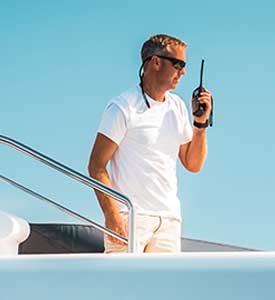
We provide the Fort Lauderdale yacht crew training courses you require for MCA compliance and which are widely accepted for the private and commercial operations of both power & sailing yachts up to 3000 gross tons. The accreditation is widely recognized by all major yacht regulatory bureaus, insurance companies, as well as charter & management agencies.
The mca officer of the watch certificate consists of seven different modules ( oow crew training courses ), these are required to be completed for the mca officer of the watch (yachts less than 3000 gt) certificate of competency and are preparation for the mca oral exam..

Fort Lauderdale Yacht Crew Training School
Professional yacht training (pyt usa) offers international yacht training (iyt) for professional and recreational yacht crew. iyt worldwide master of yachts 200gt certificates are mca recognized and essential for working on board a yacht., since its founding in durban, south africa, in the year 2000, pyt has established an enviable reputation and we are delighted to now be able to bring our special approach to the us and offer selected courses in fort lauderdale., pyt reached a milestone in april 2013 when our subsidiary, pyt usa , was granted the license to offer iyt worldwide courses in fort lauderdale , florida thereby allowing us to bring our style of teaching to one of the main centers of the mega yacht industry., yachting careers | yacht jobs, start your yacht crew training in fort lauderdale, florida and work on a yacht.

No Surprises – No Hidden Costs
Your costs are inclusive of exam fees and training boat time.
You receive a commercial-grade certification, not an “endorsed” leisure ticket.
Full MCA approval for 200 ton Masters Certificate.
Fort Lauderdale Training Facilities
Centrally located in the heart of the “yachting capital of the world”.
Within walking distance of crew houses and marinas.
Crew agencies are also just steps away.
Professional & Knowledgeable Staff
Experienced trainers give you the individual attention often lost in bigger classes.
We provide a wide experience of training for all levels of international yachting.
Committed to succeed & progress towards the fulfillment of your career ambitions.
Frequently Asked Questions (FAQs)

How to Clean the Interiors and Exteriors of a Yacht
Having a yacht that’s regularly maintained is a satisfying aspect of boat ownership. For many owners, there’s nothing more enjoyable than sailing the high seas or cruising around in a beautiful marine vessel that’s in tip-top condition.
But of course, in order to have a well-maintained boat, you need to invest time and effort into yacht cleaning. Keeping your boat looking good and clean isn’t just a matter of vanity too — it’s a key part of basic boat maintenance. That’s why knowing how to clean a yacht, or even just looking for a provider of yacht cleaning services , is of utmost importance to any boat owner.
In this article, we discuss yacht cleaning tips and tricks, particularly for the interior and exterior parts of your water vessel.
The Importance of Yacht Cleaning
Have you ever noticed signs of rusting on your boat after a day on the water? That’s inevitable because a day of cruising can be tough on any water vessel. Yacht cleaning every day seems over the top, but wiping down the varnished teak with boat cleaning supplies after a day of sailing is essential. Why? Because salt may instantly start to corrode on your yacht and form pox, which will damage your boat if it’s not washed away.
Similarly, if you leave salt on your boat, it will cause pitting and chalking. The crystals from the saltwater will scratch and cause abrasions on your boat, leaving it full of deterioration and rust.
Of course, boat maintenance doesn’t start and end at yacht exterior cleaning . You need to clean and maintain the interiors too! Yacht interior cleaning may not be an obvious concern for those boat owners, but it’s an essential part of yacht ownership. With regular boat interior cleaning, you help prevent rust and the decay of surfaces and components. This type of decay can be especially serious when your vessel is parked regularly in bodies of salt water. Without proper care, constant exposure to saltwater can accelerate a watercraft’s yacht’s deterioration.

How to Clean a Yacht: Interior Surfaces and Components
The interiors of yachts are complex spaces, especially ones beautifully handcrafted with intricate details. But unlike a house, they may take up a lot of abuse. For instance, the carpets are trampled on and the furnishings are constantly blasted with exhaust fumes and salt-infused air.
So, how exactly do you keep your boat’s interiors smelling fresh and looking pristine? Here are some yacht cleaning tips and tricks:
Tackle mold and odor
One of the major problems with yacht interiors is odor. While there are several ways to prevent it, the best way is to keep your bilges dry and clean.
A great solution is to set up self-draining dehumidifier systems in the shower or galley. If you want something more cost-effective, you can get some charcoal bricks, put them in several plastic containers with holes in the lids, and then place them in strategic locations throughout your yacht. C harcoal is known to neutralize odors and they’re much safer to use than chemical odor neutralizers.
You need to take control of mold too. Mildew remover sprayed on a rag, or even just disinfecting wipes, are a good start. You can wipe them on surfaces to ensure mold doesn’t develop.
Protect interior finishes
When it comes to interior yacht cleaning products, it’s best to avoid harsh chemicals and limit the number of products you use. For instance, don’t use a different cleaner for each task. If you need to disinfect multiple areas, do a simple wipe-down using antibacterial wipes. However, keep in mind that while these wipes are good for hard surfaces, they don’t belong on varnished, high-gloss surfaces.
An important part of our boat cleaning tips: Be cautious when cleaning the satin finishes of wooden surfaces. Aggressive rubbing will gradually break down the satin’s traits. This will leave you with a shiny or lightly sanded finish on what was once a matte surface. Don’t use harsh cleaners as these will hurt your finishes over time. For instance, spray cleaners may be incredibly effective in removing dirt and grime, but they will eventually dull the finish. Lastly, make sure you always use microfiber towels in cleaning surfaces as they are less likely to scratch.

How to Clean a Boat: Exterior Surfaces and Components
Now that you know how to clean a boat’s interior, it’s time for exterior yacht cleaning tips and tricks. By regularly maintaining the external parts of your boat, you can keep it looking beautiful until the time you decide on a yacht exterior refit.
Here are the items you need to take note of:
Hull and gel-coat surfaces
Let’s go through each of them.
A yacht’s engines need regular cleaning, whether you have an outboard or an inboard powering your boat. If you have outboard engines, start by waxing the cowl and then washing them down with water and soap after every use. The surfaces are similar to automotive finishes, so treat them as you would your car. That said, never hit an outboard cowl with an abrasive bristle brush. It’s best to use wash mitts or microfiber cloth.
However, keep in mind that there are electrical wires and sensitive components that can be damaged by harsh chemicals and cleaners. That’s why most boat owners leave engine cleaning to the pros at Marine Care.
Hull sides and other gel-coated surfaces require maintenance and serious protective coverings to prevent oxidation and stay shiny. This starts by applying a base coat of two layers of paste wax. After each cruise or sailing trip, you also need to wash down the boat with soap that contains liquid wax.
To regularly clean teak, simple scrub-downs with soapy water are the best way. But this will only get you by for so long. If your teak begins to blacken and look mottled, you will need to use a teak cleaner that’s acid-based.
One of the most important yacht cleaning tips: remove the teak from the yacht before you use these cleaners. The acids will dull and damage the paint, metals and gel coat of your vessel.

Keep Your Yacht’s Exteriors and Interiors Clean with Marine Care
You’ve invested a lot of money and love into your yacht. With regular yacht maintenance and cleaning, you can avoid costly repairs in the future, preserve the life of your boat, and make sure it stays looking and running great should you ever decide to sell it in the future.
At Marine Care, we understand that regular yacht maintenance and cleaning isn’t as easy as enjoying the sea breeze, which is why we offer a variety of yacht cleaning services to keep your watercraft spic and span all year round. We take away the chores and headaches of cleaning your yacht by offering them at very competitive rates, no matter the level of service needed.
For more information and inquiries, don’t hesitate to contact us today.
Leave a Comment Cancel Reply
Your email address will not be published. Required fields are marked *
Save my name, email, and website in this browser for the next time I comment.
Baltimore cruises to reroute after bridge collapse pauses port traffic
Carnival will move some operations to norfolk while baltimore recovers from key bridge collapse.

Cruise lines are scrambling to make alternative plans and avoid the Port of Baltimore while officials suspend vessel traffic amid cleanup and rescue efforts around the Francis Scott Key Bridge collapse.
Three major cruise lines sail from Baltimore, though no ships were in port Tuesday morning. The next cruise was scheduled to depart Sunday, but its operator confirmed late Tuesday afternoon that the voyage would instead head out from Norfolk.
Amira M. Hairston, a spokeswoman for the Baltimore port, said in an email that the status of the upcoming cruise ship schedule is not yet known.
“At this time we do not know how long vessel traffic will be suspended. As soon as that is determined we will provide an update. Until then please keep those involved in your prayers,” Hairston wrote.
Royal Caribbean International’s Vision of the Seas left Saturday for a 12-night southern Caribbean cruise with plans to return April 4. The cruise line said in a statement that it was “closely monitoring the situation, and our port logistics team is currently working on alternatives for Vision of the Seas’ ongoing and upcoming sailings.”
“We are deeply saddened by the tragedy and collapse of the Francis Scott Key Bridge and extend our heartfelt prayers to all those impacted,” the company said. Royal Caribbean International will contact guests and travel partners once plans are final, the operator said.
Carnival Legend set off Sunday for a seven-day Bahamas cruise; the ship was scheduled to return March 31 and depart for its next sailing the same day. Instead of coming back to Baltimore, Carnival said late Tuesday, it will end its trip in Norfolk, and free buses will bring passengers back to Baltimore.
The ship’s next seven-day cruise will leave Norfolk and return to the port. In a news release , Carnival said it would temporarily move Baltimore operations to Norfolk “while Key Bridge rescue and cleanup efforts continue.”
“Our thoughts remain with the impacted families and first responders in Baltimore,” Christine Duffy, president of Carnival Cruise Line, said in a statement. “We appreciate the pledge made by President Biden today to dedicate all available resources to reopen Baltimore Harbor to marine traffic as soon as possible. As those plans are finalized, we will update our future cruise guests on when we will return home to Baltimore, but in the meantime, we appreciate the quick response and support from officials in Norfolk.”
Carnival Pride is supposed to start sailing from Baltimore next month, mostly to the Bahamas and eastern Caribbean.
Norwegian Cruise Line does not have cruises scheduled out of the port until later this year. American Cruise Lines, a U.S. river cruise operator, has Chesapeake Bay trips on small vessels scheduled from Baltimore starting in May. The cruise line said it will monitor developments “and make adjustments if needed.”
Cruise Lines International Association (CLIA) said it was “deeply saddened” by the bridge collapse and was closely following the situation. “Right now, the most important thing to do is to allow the emergency workers to do their work,” the group wrote in a statement.
This year, 12 ships are scheduled to make a total of 115 calls at the Port of Baltimore, the industry association said. With room for roughly 2,000 or 2,100 passengers at double occupancy, most Baltimore-based ships are much smaller than the record-breaking behemoths that sail from Florida ports.
“Any adjustments to current cruise activity at the port will be announced as soon as available by the individual cruise lines,” CLIA said in its statement.
A news release issued last month by Maryland Gov. Wes Moore’s office said that more than 444,000 individuals cruised out of the Port of Baltimore last year, the most since 2012. The Maryland Port Administration said in a news release last year that the cruise industry generates nearly 400 jobs and $63 million in revenue every year for local businesses.
The port positions itself as a convenient option for cruising year-round, thanks to its location off Interstate 95 and plentiful parking. More than 40 million people live within a six-hour drive of the city, the port administration says.
Baltimore bridge collapse
Baltimore’s Francis Scott Key Bridge collapsed after being hit by a cargo ship , sending at least eight people from a construction crew into the water. Two people were rescued and the remaining six are presumed dead, officials said. Follow live updates and see photos from the scene .
How it happened: The container ship lost power moments before colliding with the bridge, Maryland Gov. Wes Moore (D) said. Video shows the bridge collapse in under 40 seconds.
Victims: All six missing victims are presumed dead, the U.S. Coast Guard said, and the agency has ended rescue efforts. The entire crew aboard the 985-foot container ship Dali survived . First responders shut down most traffic on the four-lane bridge after the crew issued an urgent “mayday.” It saved lives, Moore said.
Economic impact: The collapse of the bridge, which severed ocean links to the Port of Baltimore, adds a fresh headache to already struggling global supply chains . See how the collapse will disrupt the supply of cars, coal and tofu .
History: The Key Bridge was built in the 1970s and spans the Patapsco River. Rebuilding the bridge over the Patapsco River will probably take years and cost hundreds of millions of dollars, experts said.


IMAGES
COMMENTS
Housekeeping Do's and Don'ts. Always spray your cleaning cloth first do not spray directly onto surfaces. Never put any cleaning products on surfaces such as putting the Downy/Febreeze on the bed side table. This can have a sticky residue on it which can damage surfaces. Do keep your vacuum smelling fresh by puting a couple of drops of ...
16 Superyacht Housekeeping Tips: The Do's and Don'ts. Always spray your cleaning cloth first do not spray directly onto surfaces; Never put any cleaning products on surfaces such as putting the Downy/Febreeze on the bed side table. This can have a sticky residue on it which can damage surfaces
From a Stew to Future Stews, here are 10 things no one tells you before you become a yacht stewardess…. You will laugh until you cry and cry until you laugh somedays as you are challenged physically, mentally and emotionally. Remember to be kind to yourself.. You quickly develop a new love for a hoover (vacuum cleaner) learn to drive ...
More general steward/ess related tips: - Anticipate guest needs. - Learn how to keep your mouth shut with a smile on your face - through long hours - and keep a happy, positive attitude. - Be flexible. - Have an open mind and a willingness to learn, listen and help where needed. - Attention to detail - the devil is in the details.
Take an ear bud and toothpick and clean out each hole individually. Always empty a steam iron after each use to prevent clogging. Cleaning the internal parts: Fill the steam iron with equal parts water and white vinegar. Let it steam for several minutes. Disconnect the iron and let it sit for one hour.
Laundry 101. The basic laundry cycle is as follows: Collect the dirty laundry from guests and crew cabins. Sort the laundry into darks, whites, colors, galley, and engine room items. Further sort the materials into towels, guest delicates, guest dry cleaning, and sheets. The next step after the sorting process is the pre-wash treatment and ...
Blot as much as possible with a WHITE paper towel (no dyes), then add some club soda - or cold water - to dilute the stain. Keep stain wet and keep blotting, never scrub. When the paper is coming up clean, lay a stack of kitchen towel over the area and pile heavy books on top. The weight will push the towel down so that liquid sitting ...
The Seaworthy Stew recommends following Langfords Silver for all silver care and cleaning tips. Creating décor schedules for the next trip ; Updating crew items such as uniform numbers, towels etc. ... Check out The Seaworthy Yacht Stewardess Online Training course for green and junior stews. You'll finish the course feeling confident ...
Cleaning Schedules. Each yacht operates differently, but a few tasks are universal. Daily jobs will consist of washing dishes and fine glassware, making beds, cleaning floors, the bridge, all crew areas, guest bathrooms, and dayheads, taking out all rubbish, and finishing all crew and guest daily laundry. Weekly jobs may include vac dusting all ...
Green & Clean: 10 Vinegar Hacks Every Stew Should Know In the world of yachting, where the sparkle and shine of every surface matters, vinegar is the quiet achiever. We're here to walk you through 10 awesome vinegar hacks that every yacht stewardess or steward needs to know.
Make sure you clear space in your cabin cupboard for on charter uniform, ensure you have all of the uniform (including an epaulette) and it's all pressed and ready to go. If you're in service, it's good to create a table decor schedule. This allows you to prepare your table decorations in advance, enabling you to be organised the night ...
You will quickly learn that mirrors and windows are some of the hardest things to clean, and keep clean. Ensure you spray your desired product onto a clean, dry, lint-free cloth. Use this cloth to wipe your product onto the window or mirror. Be sure to buff with a dry cloth in circular motions to ensure no dirt or residue was left behind.
About this group. This group was started in July 2013 for all yachting Stewards and Stewardesses. Handy Housekeeping, Wine, Cocktails, Cleaning products, Table Setting, Service, Health, Laundry and other useful tips for Yacht Steward/esses. Feel free to share your winning ideas or ask for advice, we can all help each other!
Cleaning tips to improve your efficiency Using the correct products on surfaces What goes in a cleaning caddy ... This course will ensure you are ready for the yacht stewardess role, with 10 tailored interior modules taught by a chief stew with 6 years experience. It will give you the skills + the professional know-how so you stand out on the ...
12 Steps To Becoming A Yacht Stewardess. The best way to become a yacht stewardess is to prepare yourself from all angles. Here are the 12 steps to becoming a yacht stewardess. Research the yachting industry: Understanding the yachting world is very important for aspiring yacht stewardesses.
The Stewardess Bible. Housekeeping Perfection - Module Three. Preface. This book has been written on the premise that the super yacht stewardess requires proficiency in areas of housekeeping, knowledge of fine materials and technical skills associated with the maintenance of a super yacht interior.
The YM blog is the leading place to learn yacht stewardess tips and hacks. Master how to be more productive and efficient at work. ... Clean Daily. Let's face it, shipyards are dirty, and this dirt inevitably sneaks into the interior more often than you would like. That's why ensuring your daily housekeeping routine includes an overall interior ...
Table of Contents. 1. Housekeeping. Stewards and stewardesses work to help the yacht run ship shape. They will work to keep common areas neat and clean. Laundry might also be part of their day to day tasks. Detailing and cleaning windows might be some of the responsibilities that they will tackle. Other housekeeping tasks include: Vacuuming,
In conclusion, being a successful stewardess requires a combination of technical skills, interpersonal skills, and a deep understanding of the yacht industry. By following these tips and continually developing your skills, you'll be well on your way to building a successful and rewarding career in the yacht industry.
Shining brass fixtures, polishing wood surfaces - everything matters to keep a yacht's interior pristine. Assessing the condition of the space is the first step. Inspecting for any signs of wear or damage. Gathering tools and supplies - cleaning products designed for yachts for optimal results. Fabrics and upholstery first.
Kathleen—a chief stewardess in charge of managing a yacht in Tahiti—is dishing all of her cleaning secrets.
We provide the Fort Lauderdale yacht crew training courses you require for MCA compliance and which are widely accepted for the private and commercial operations of both power & sailing yachts up to 3000 gross tons. The accreditation is widely recognized by all major yacht regulatory bureaus, insurance companies, as well as charter & management ...
A yacht's engines need regular cleaning, whether you have an outboard or an inboard powering your boat. If you have outboard engines, start by waxing the cowl and then washing them down with water and soap after every use. The surfaces are similar to automotive finishes, so treat them as you would your car.
Baltimore bridge collapse. Baltimore's Francis Scott Key Bridge collapsed after being hit by a cargo ship, sending at least eight people from a construction crew into the water. Two people were ...